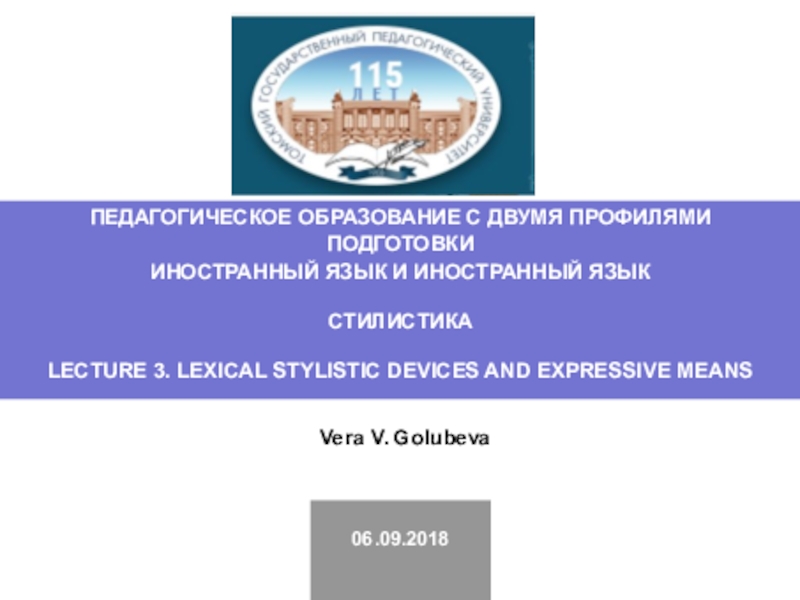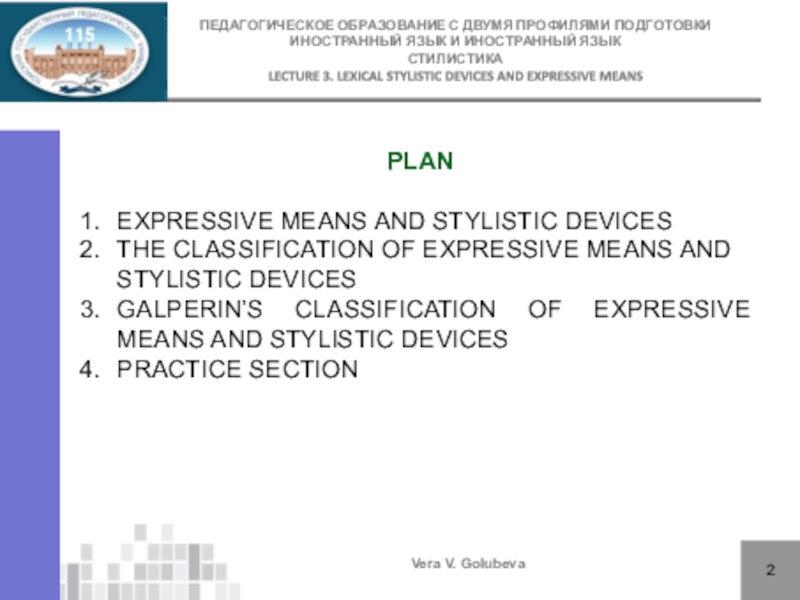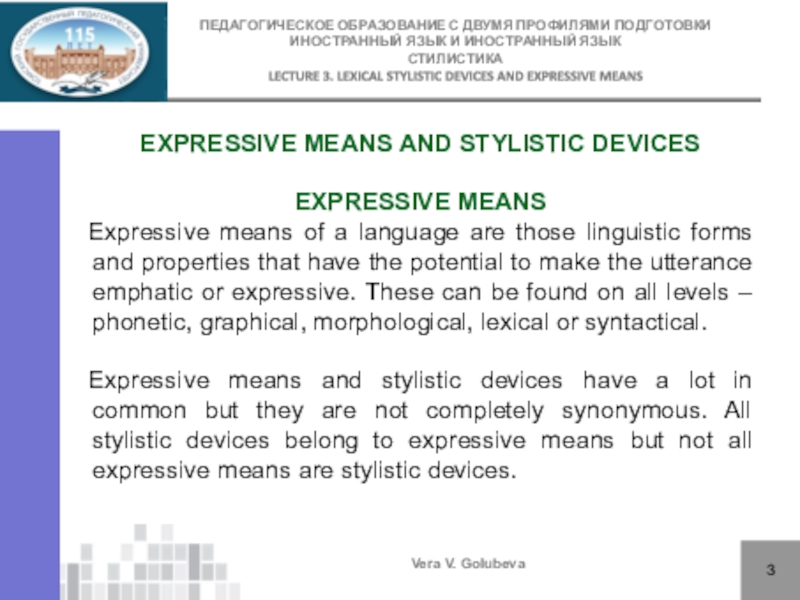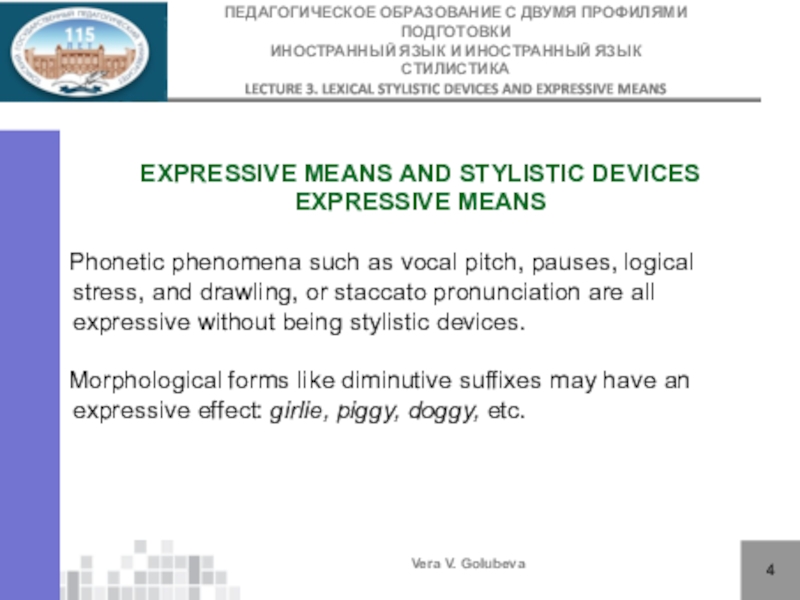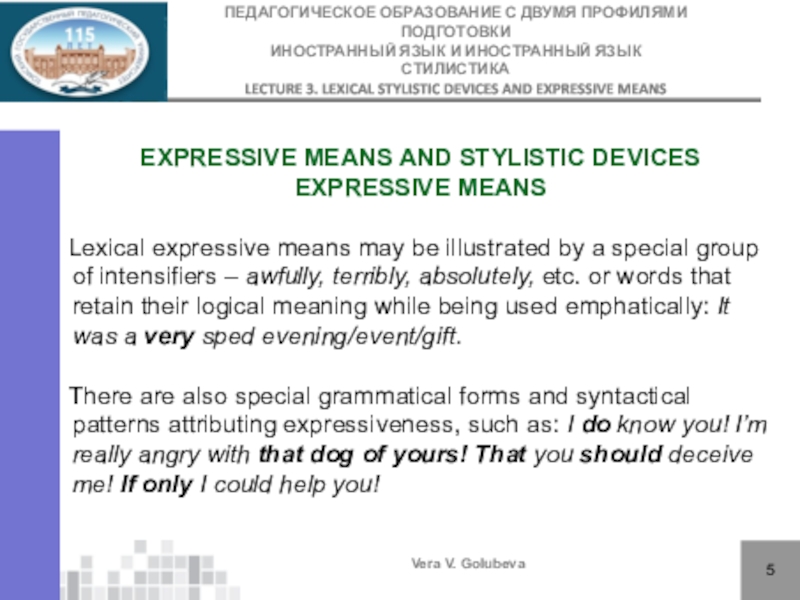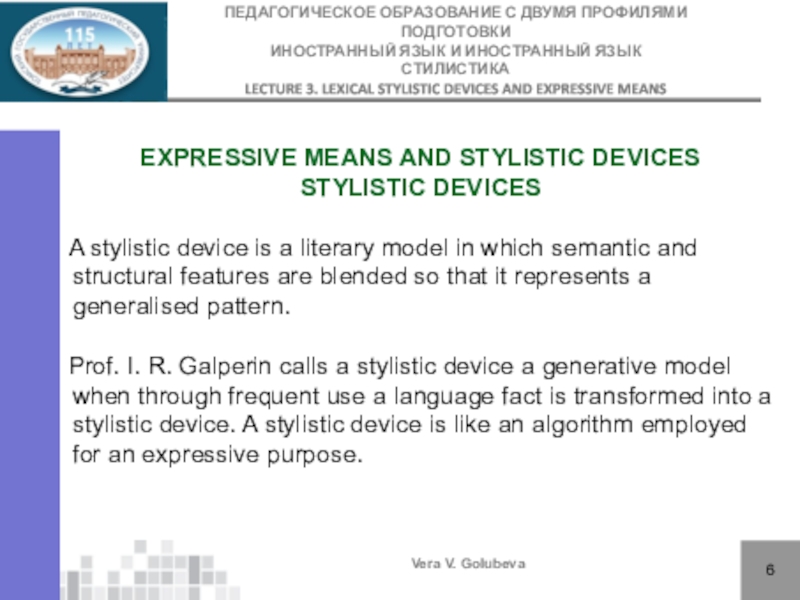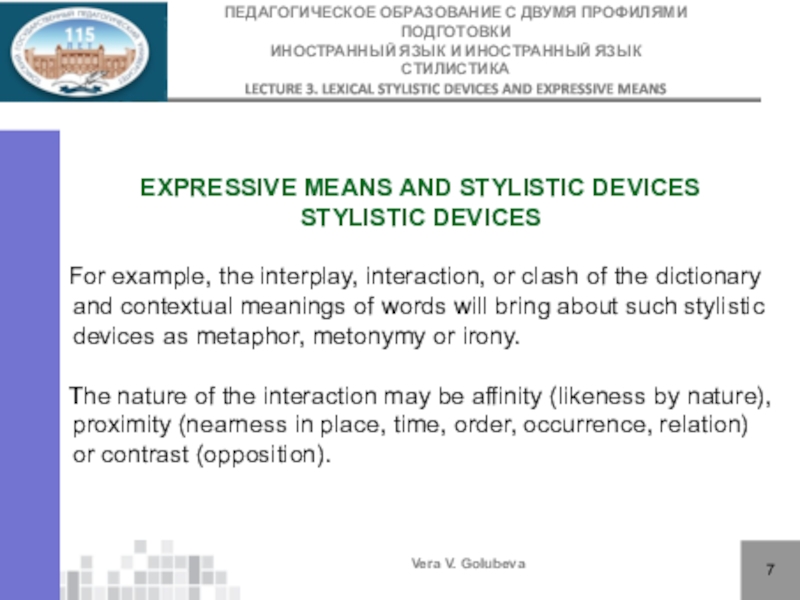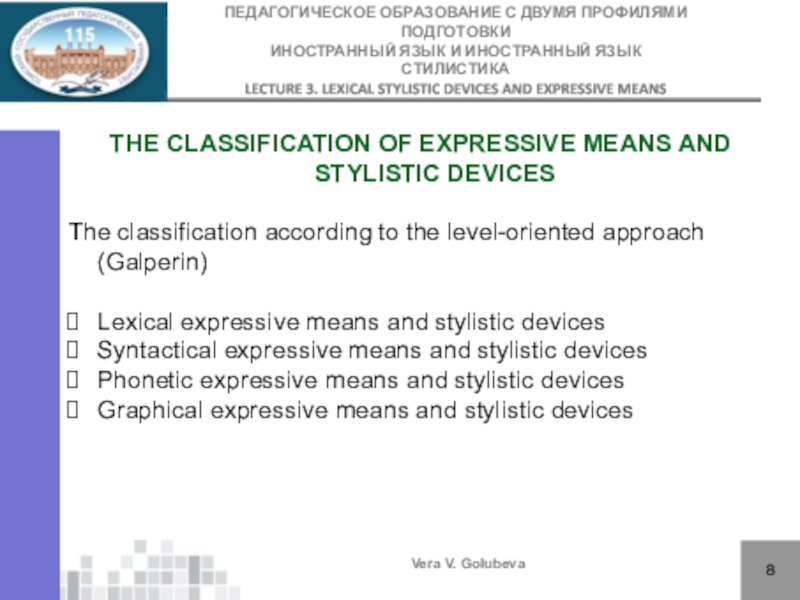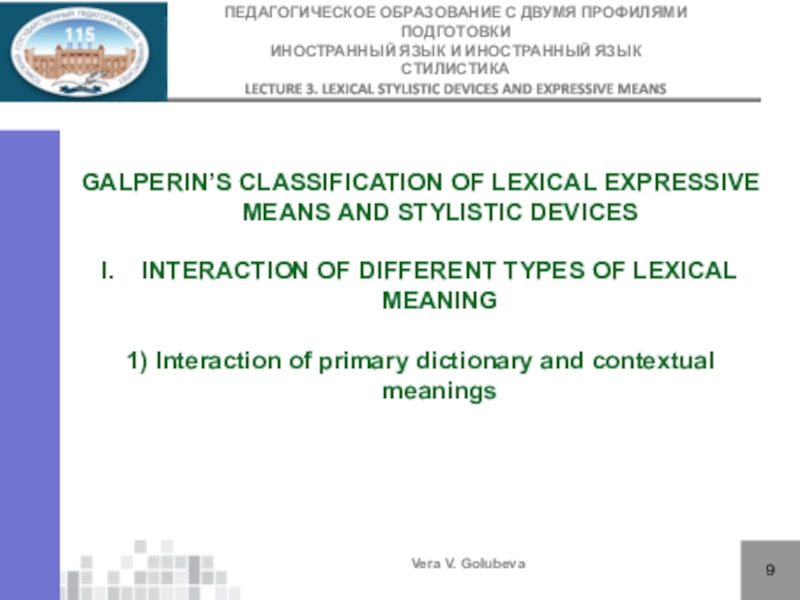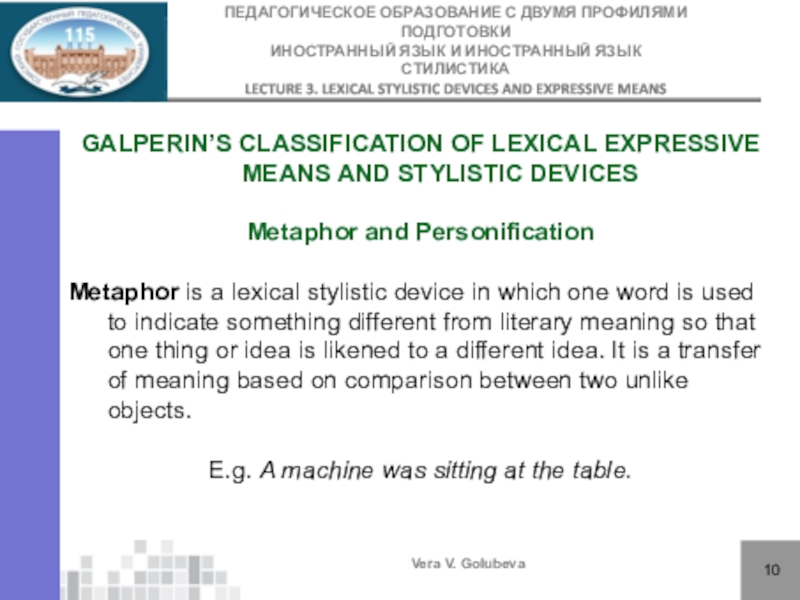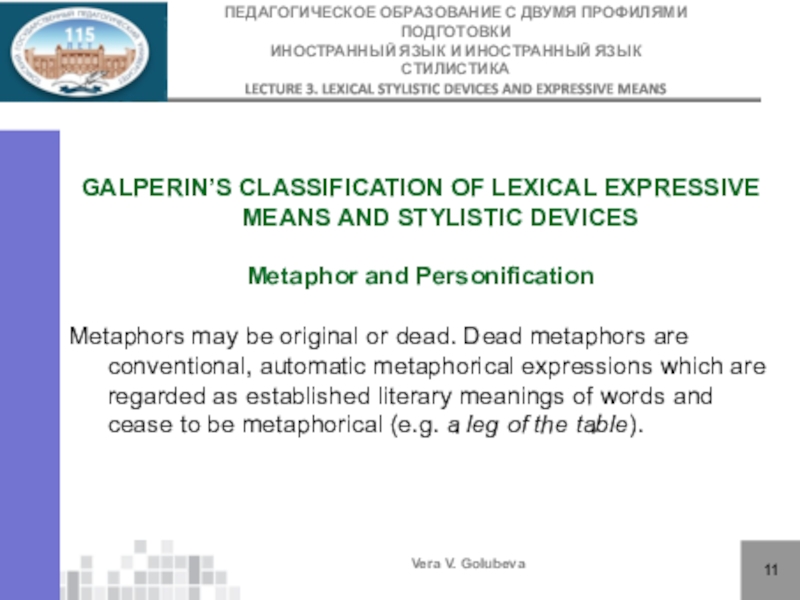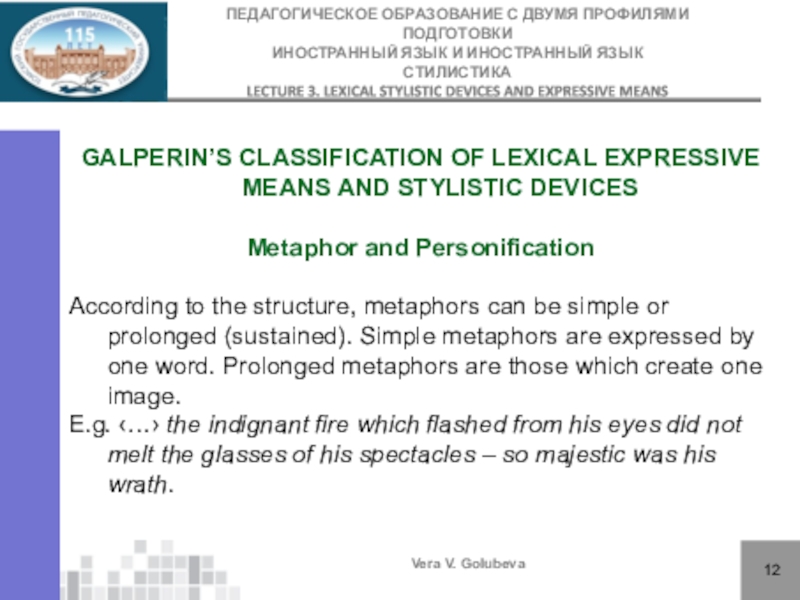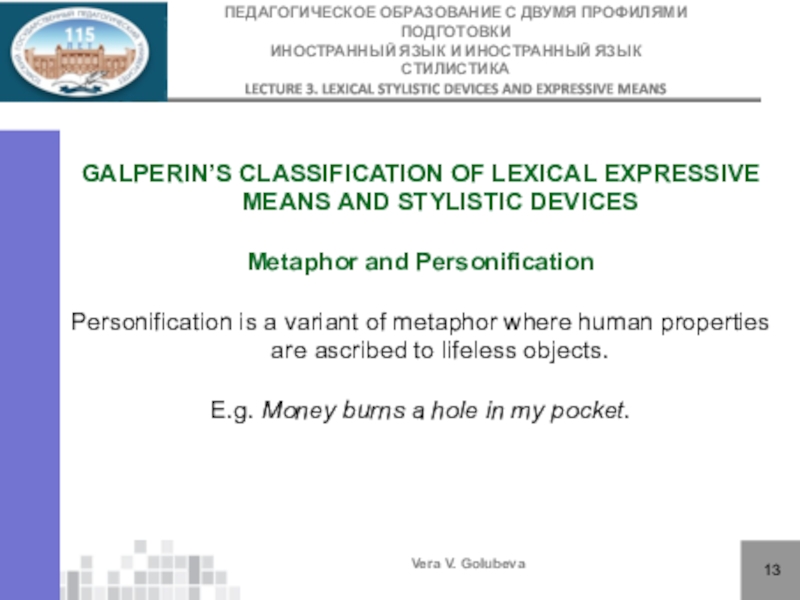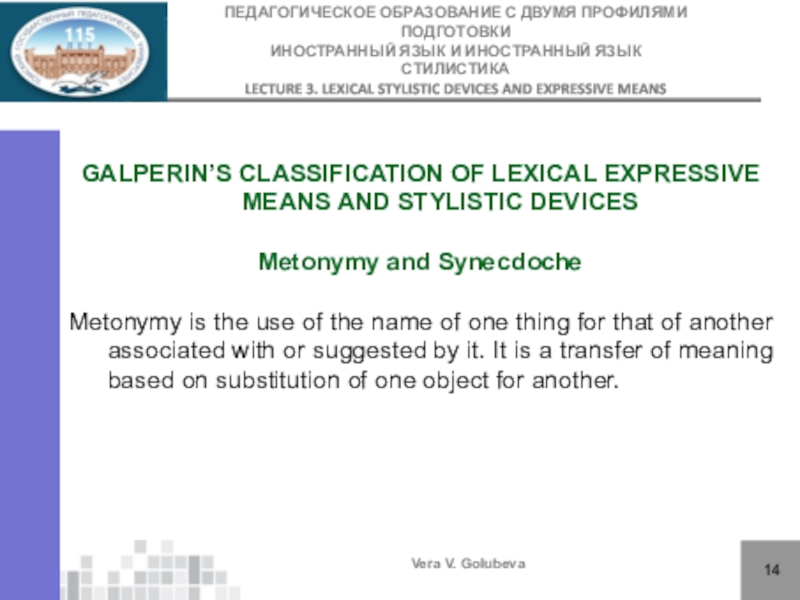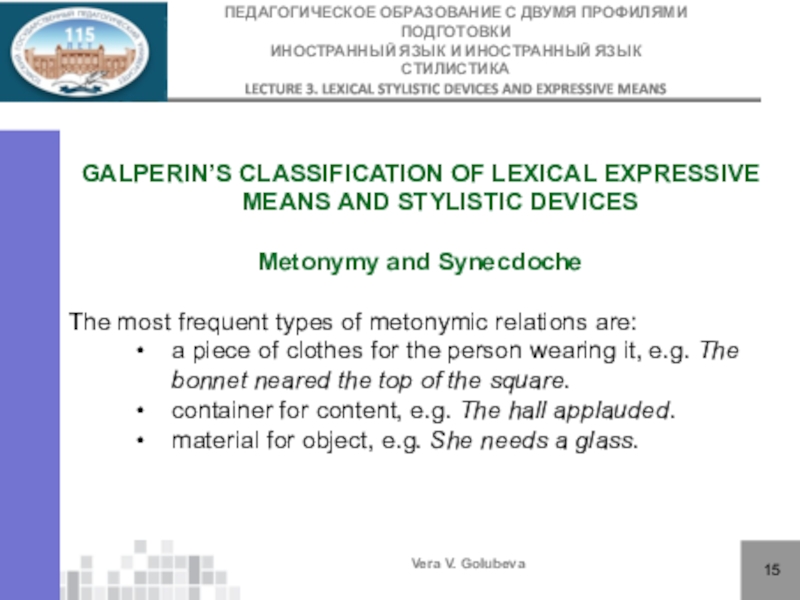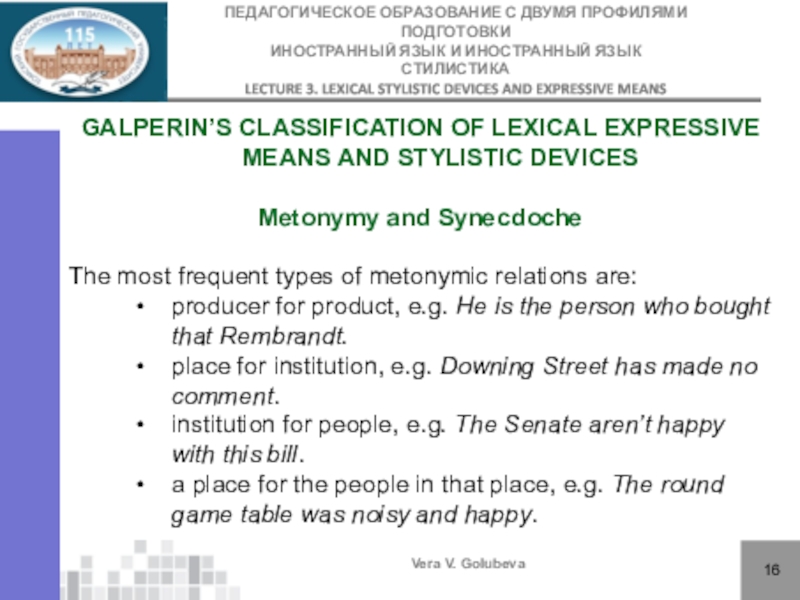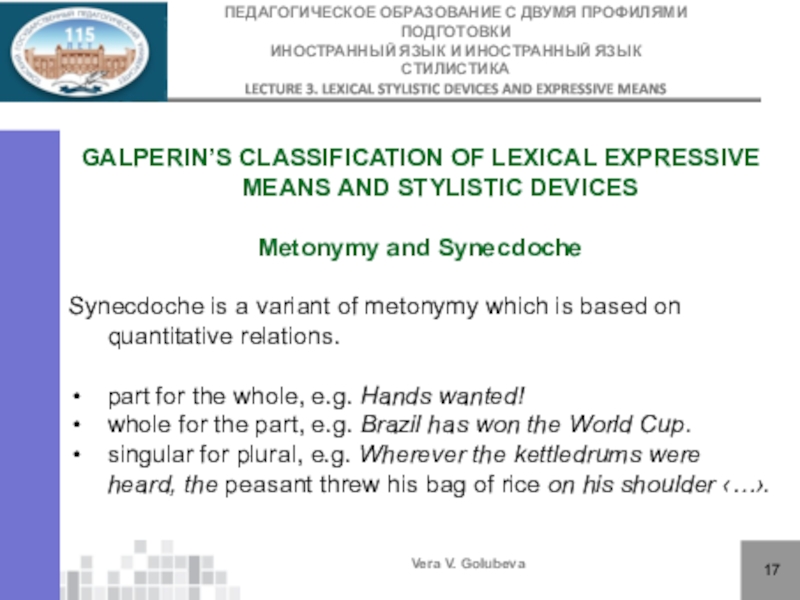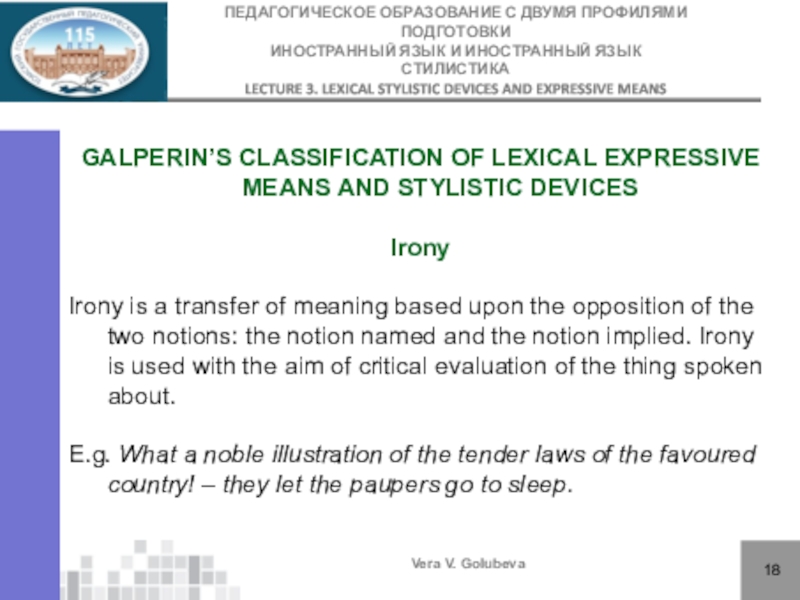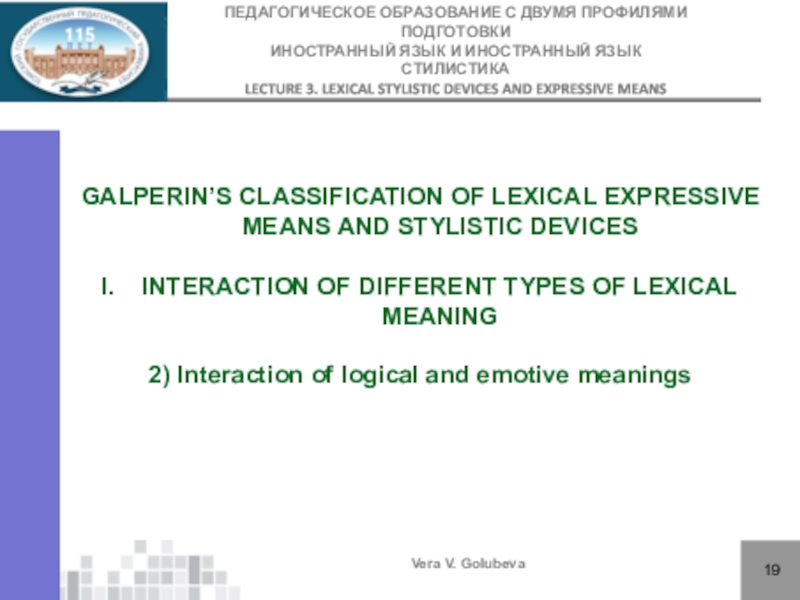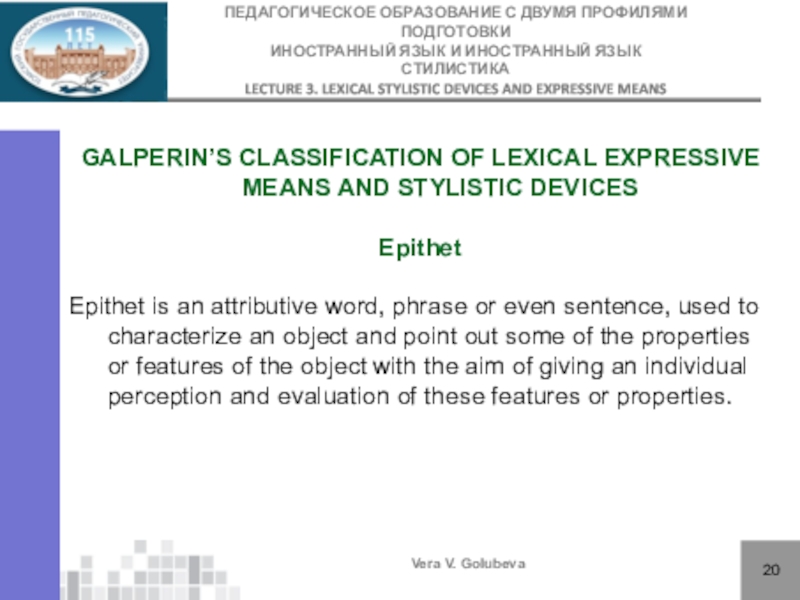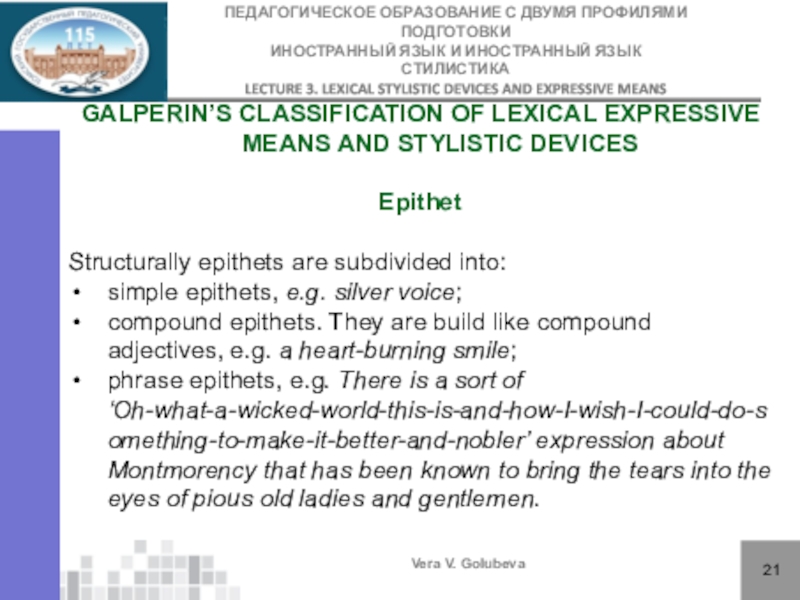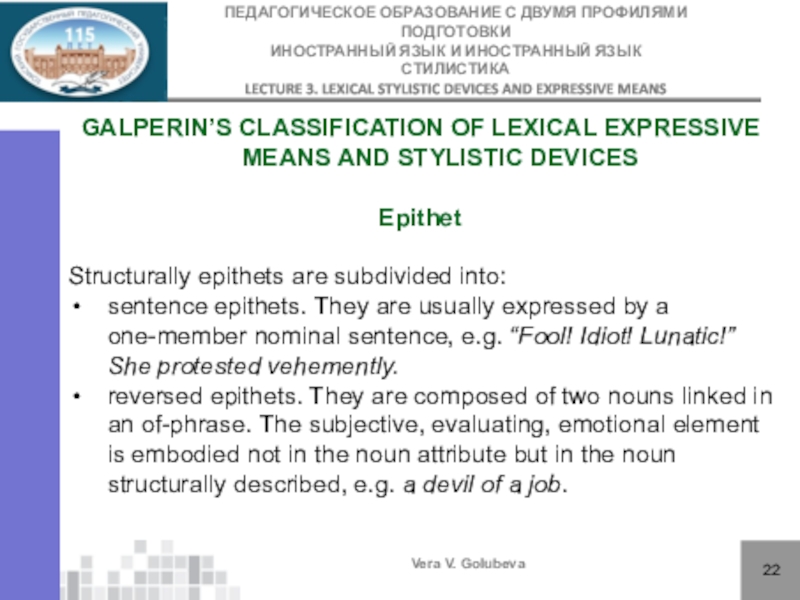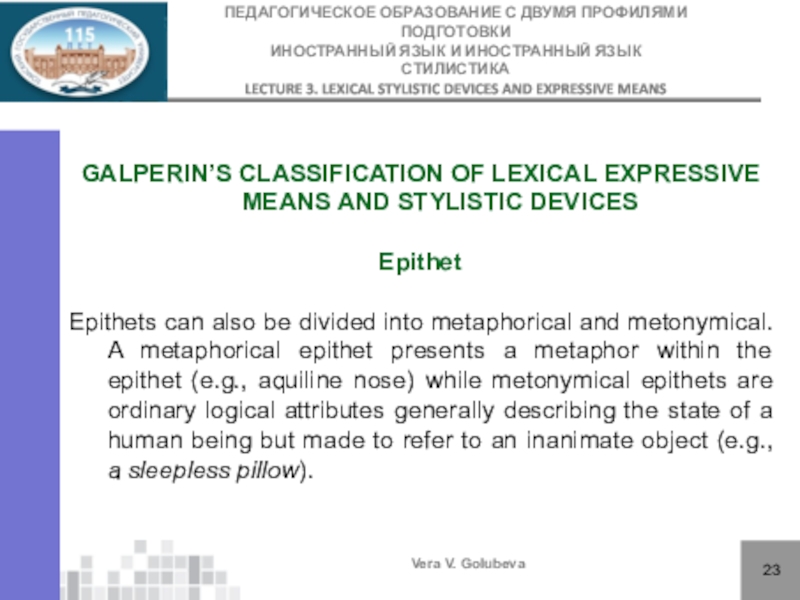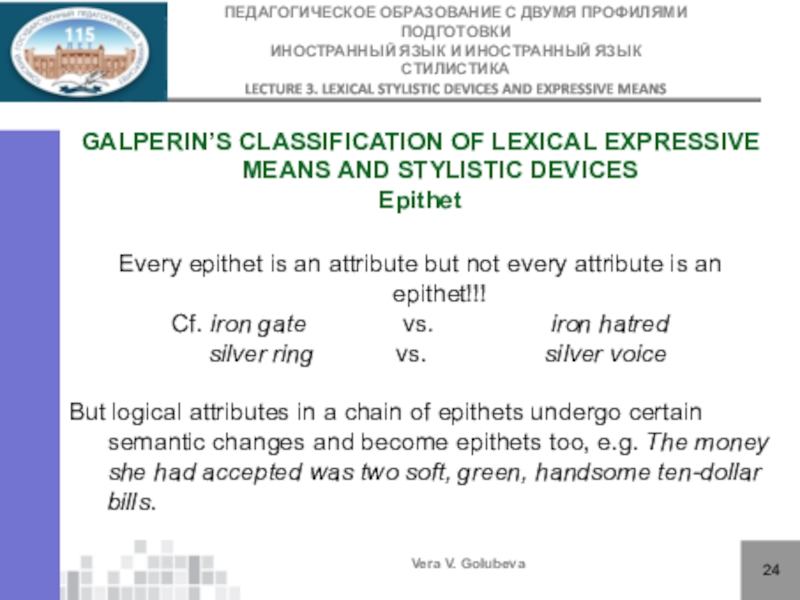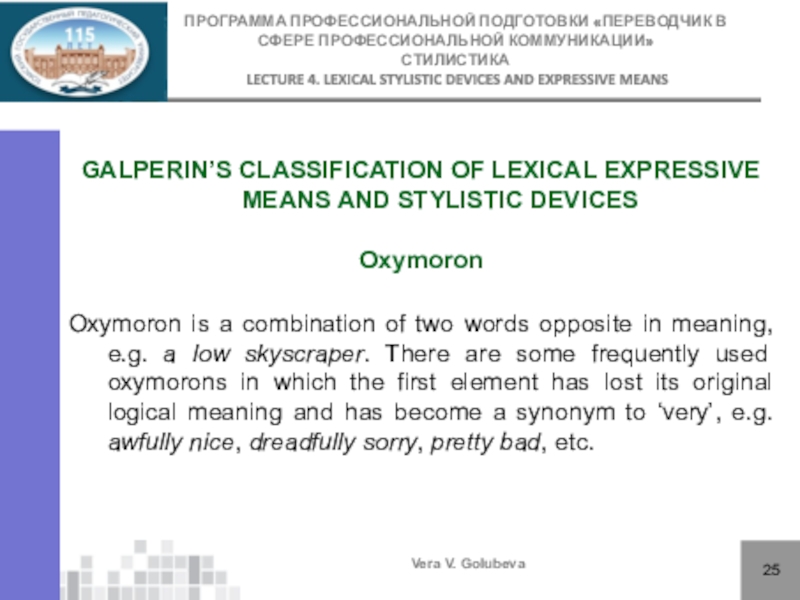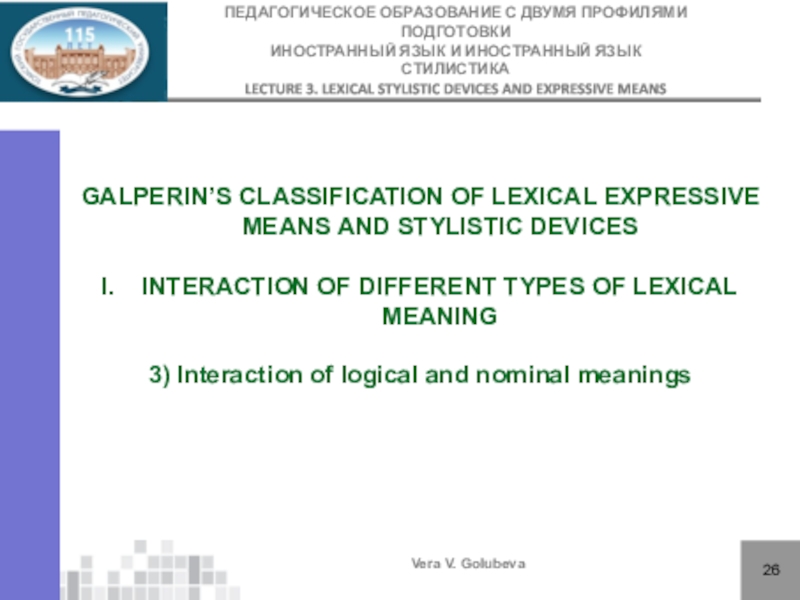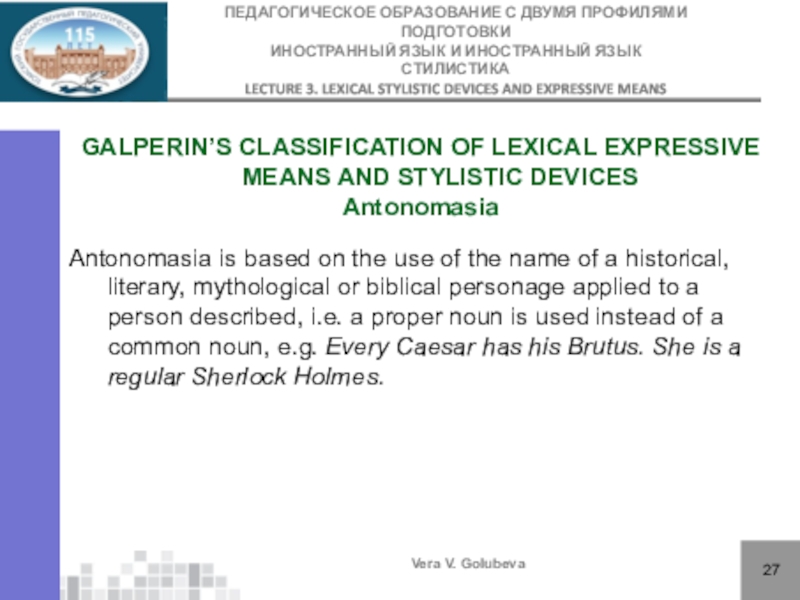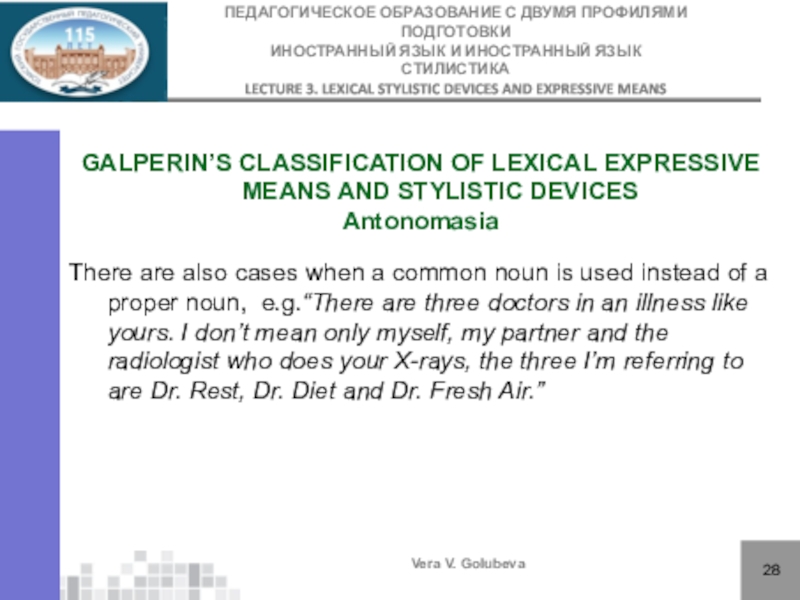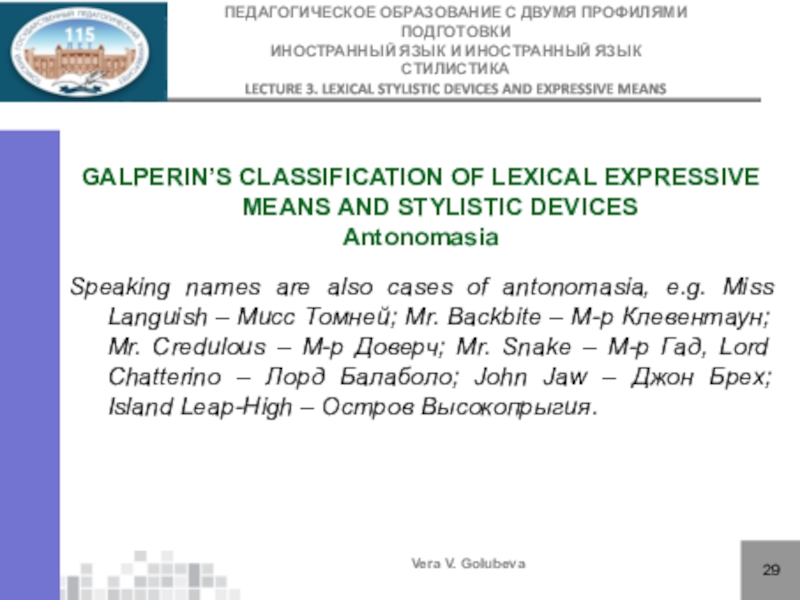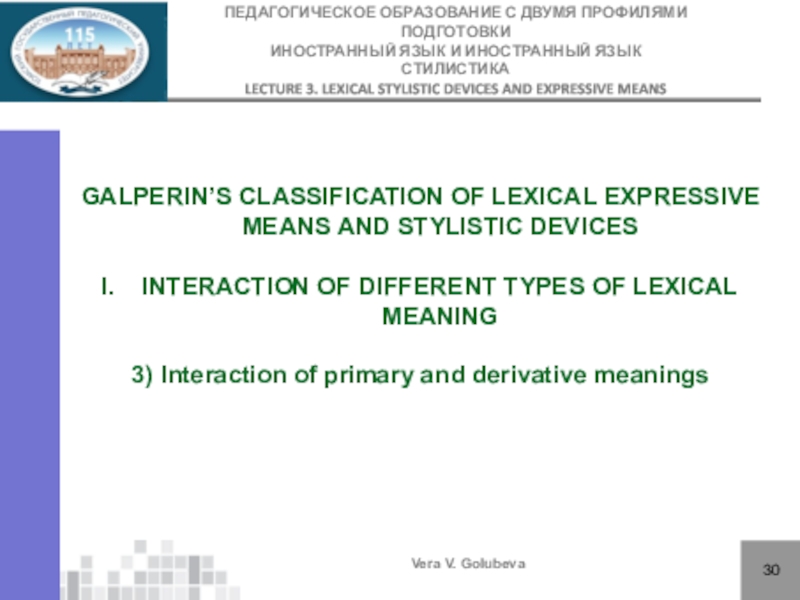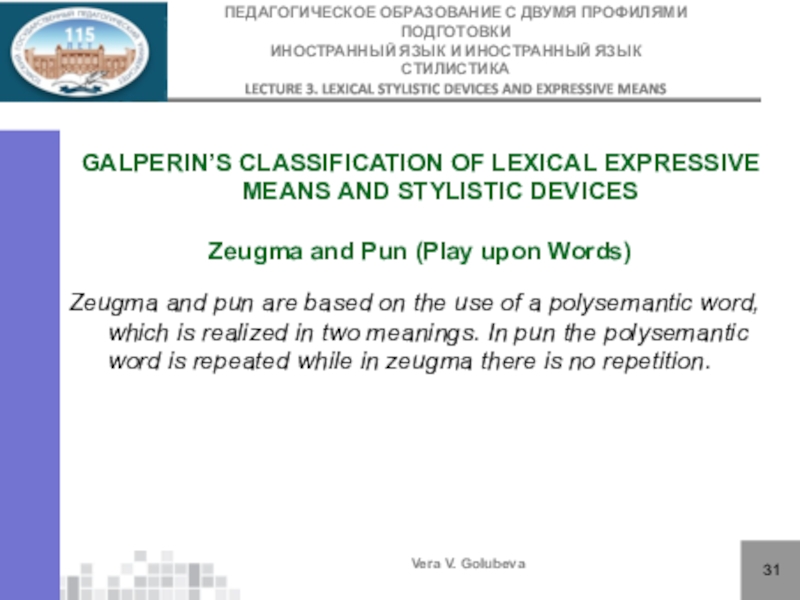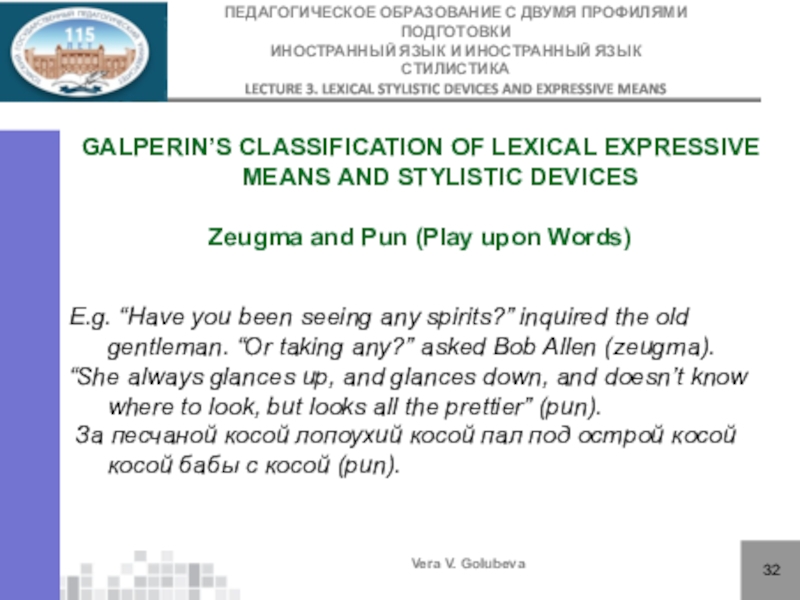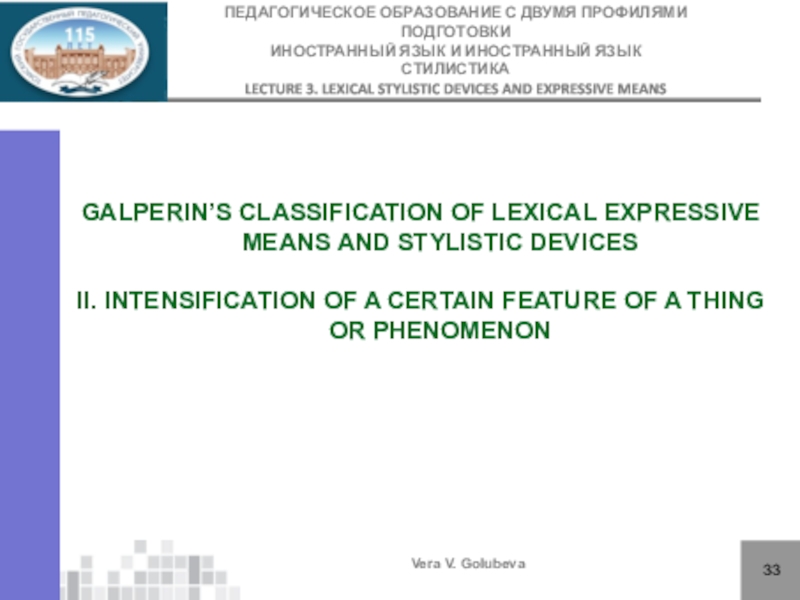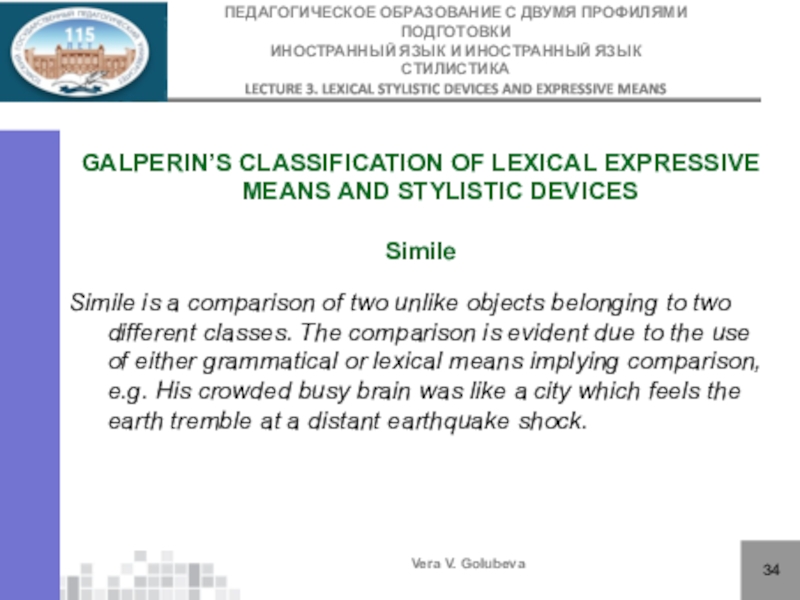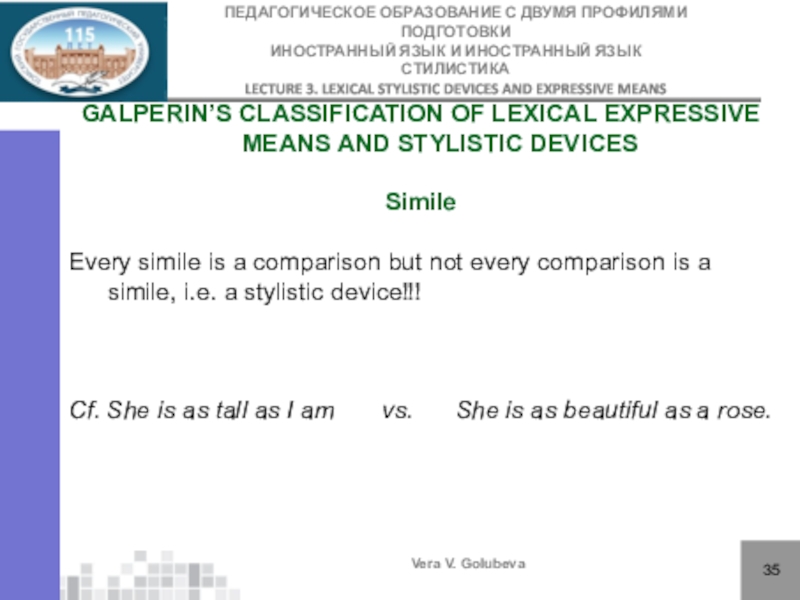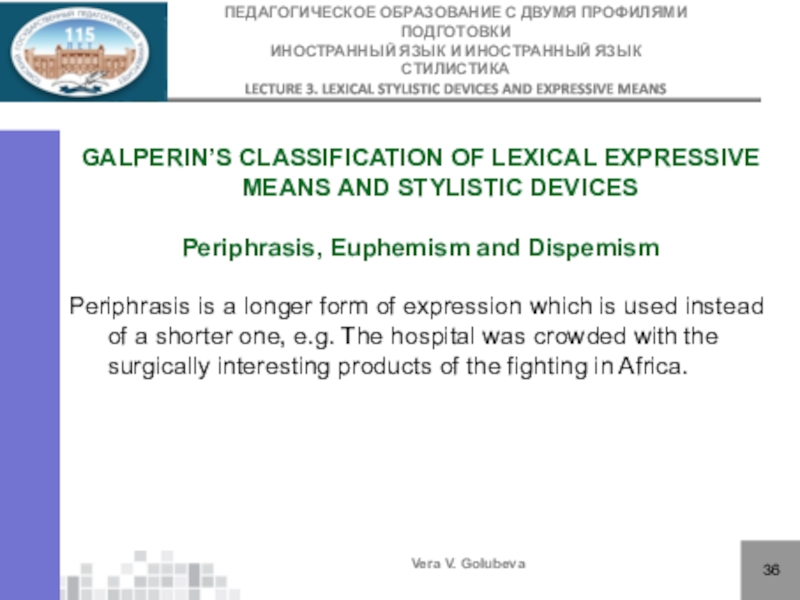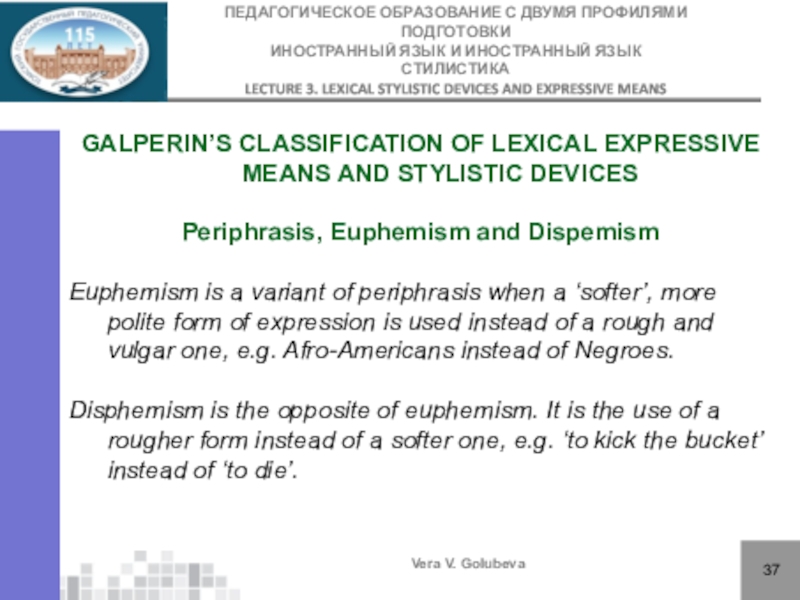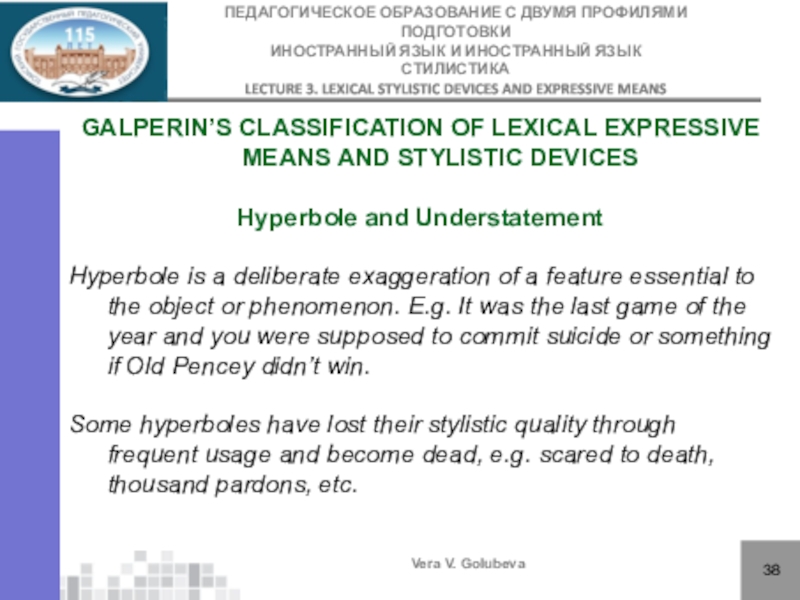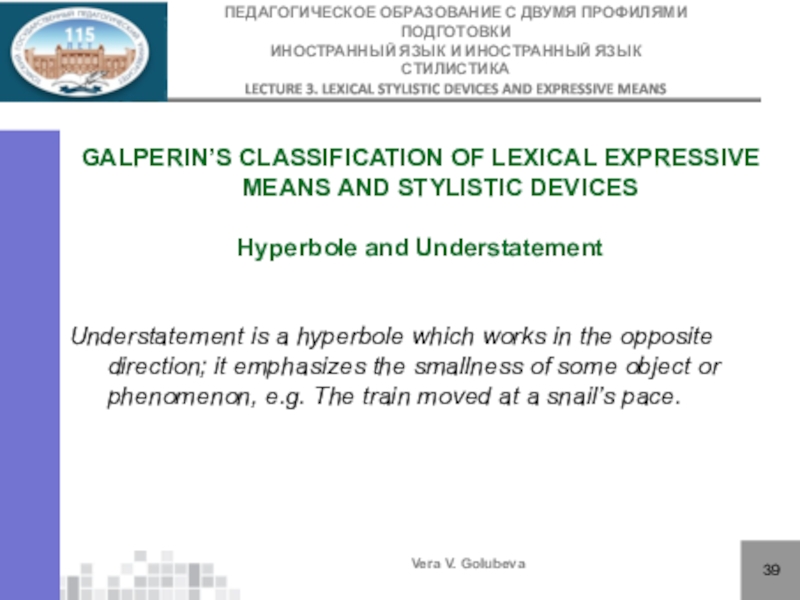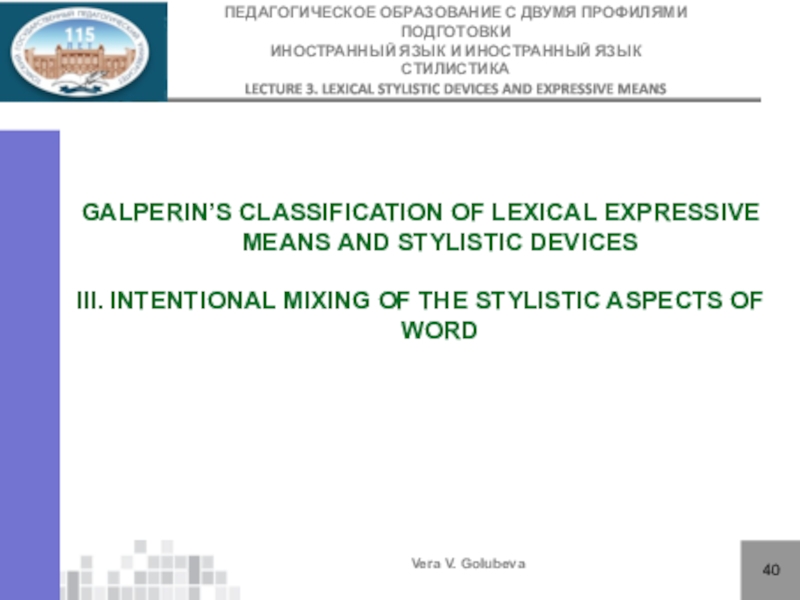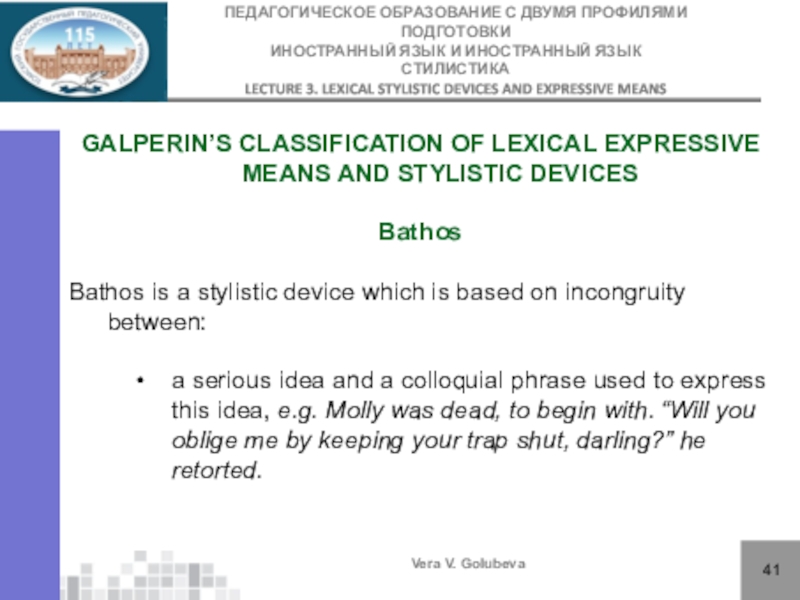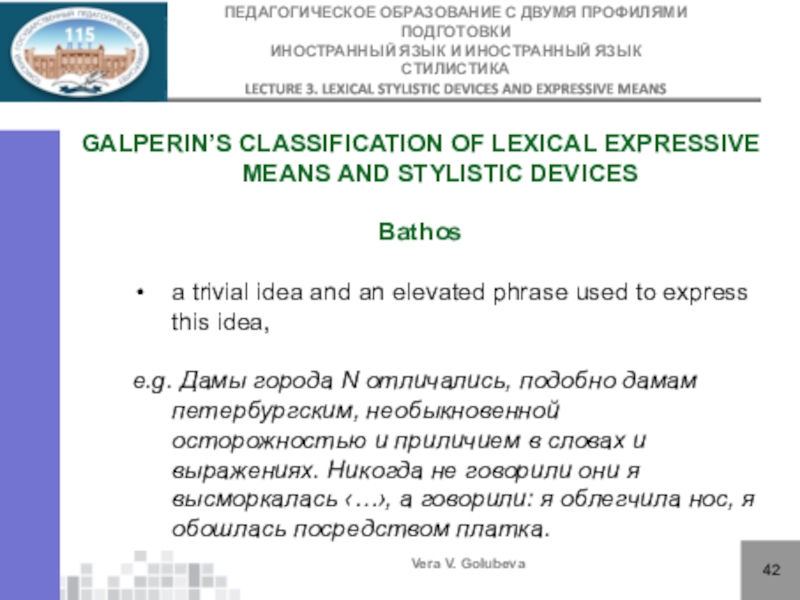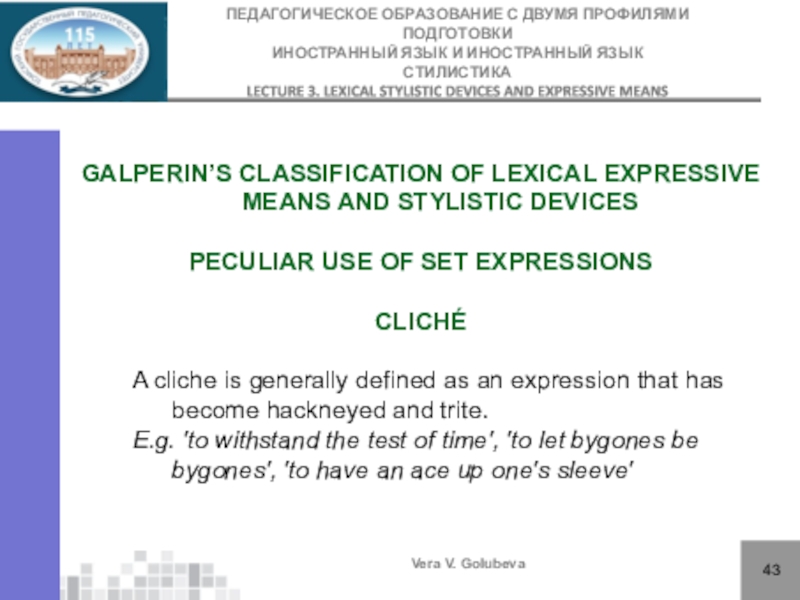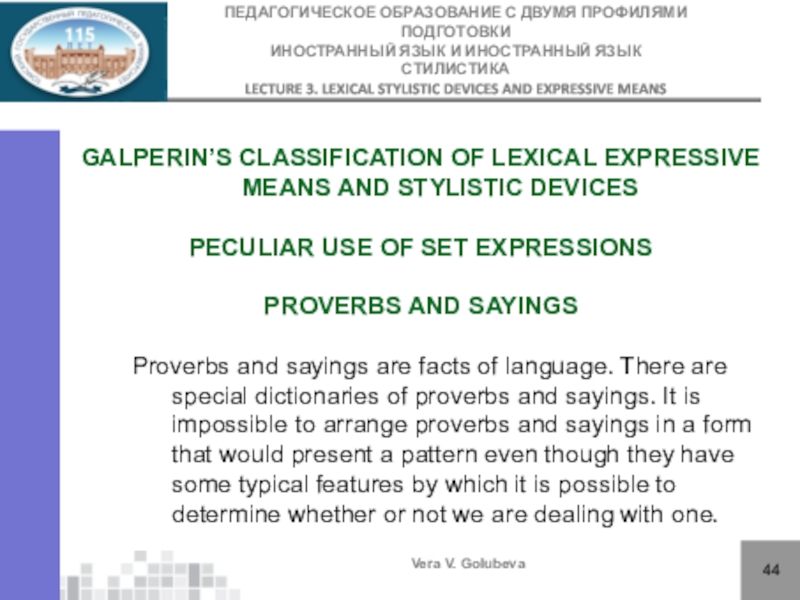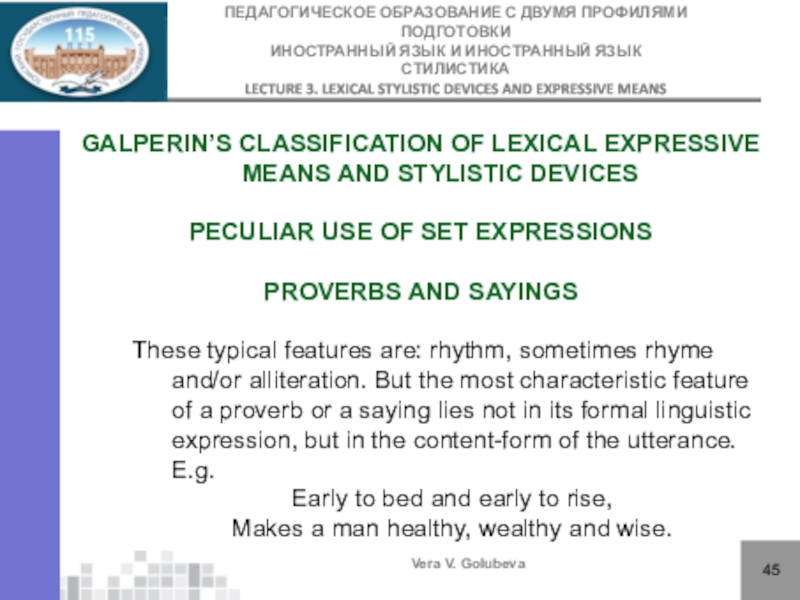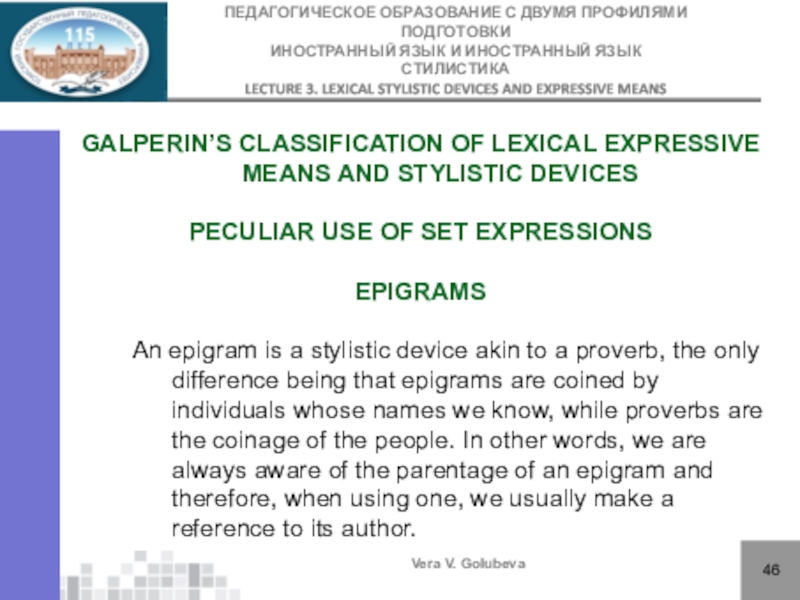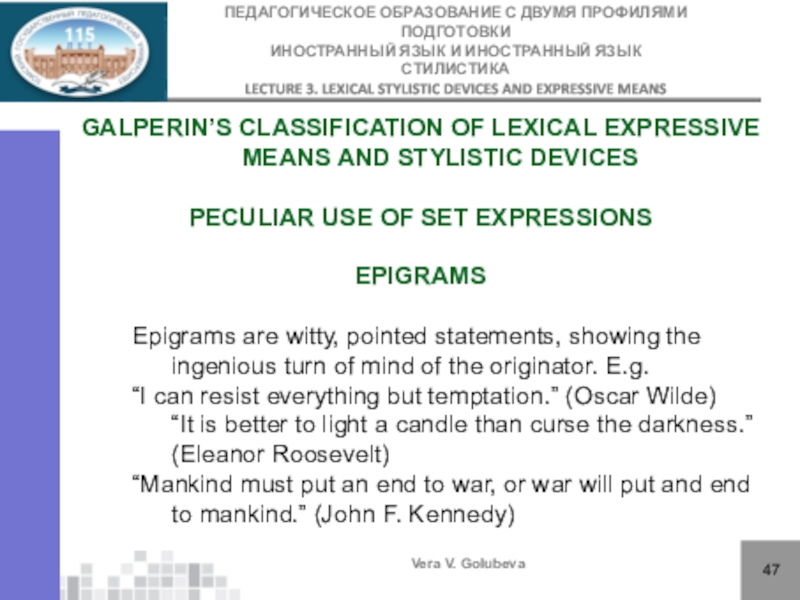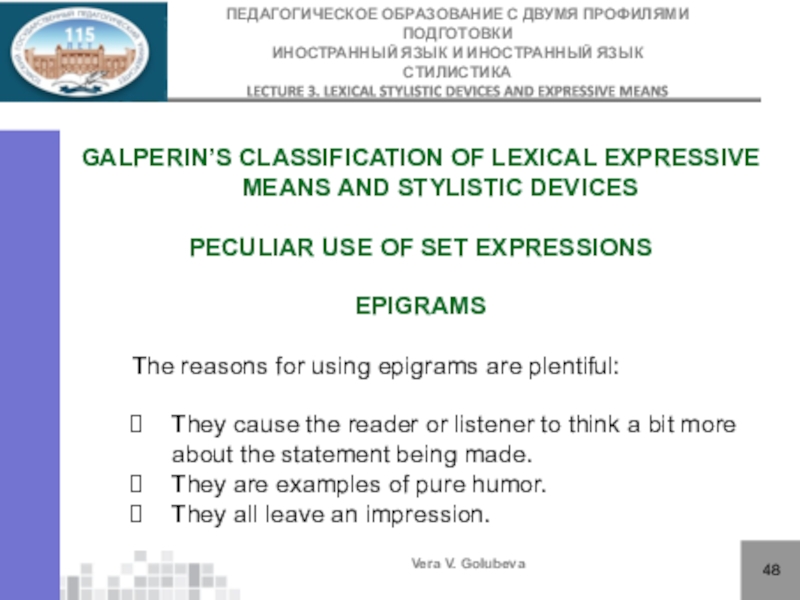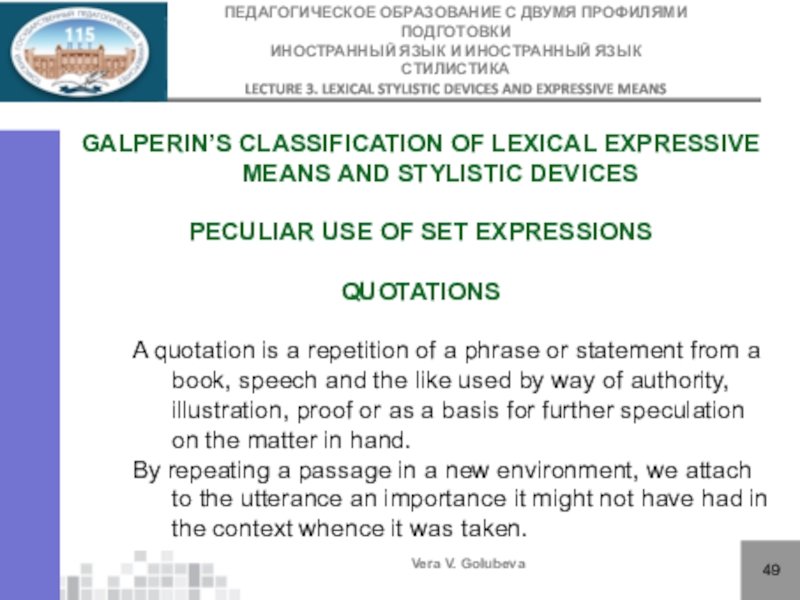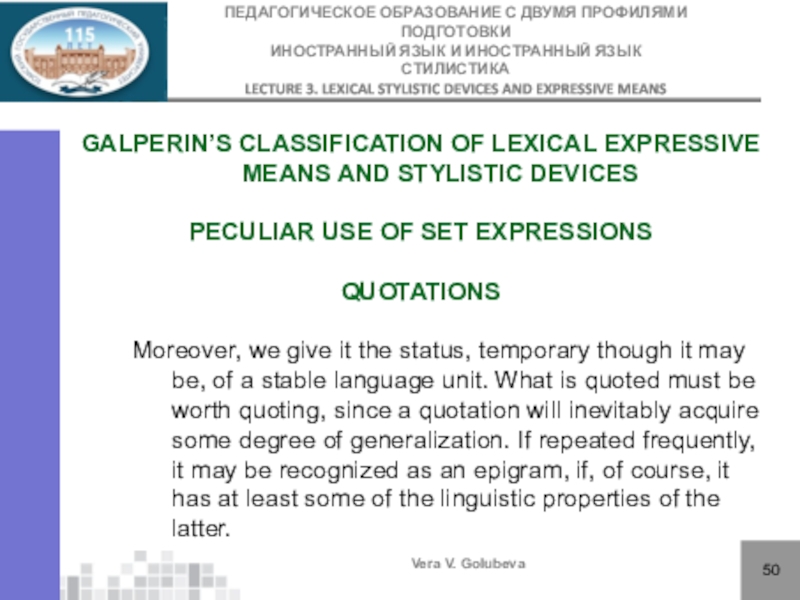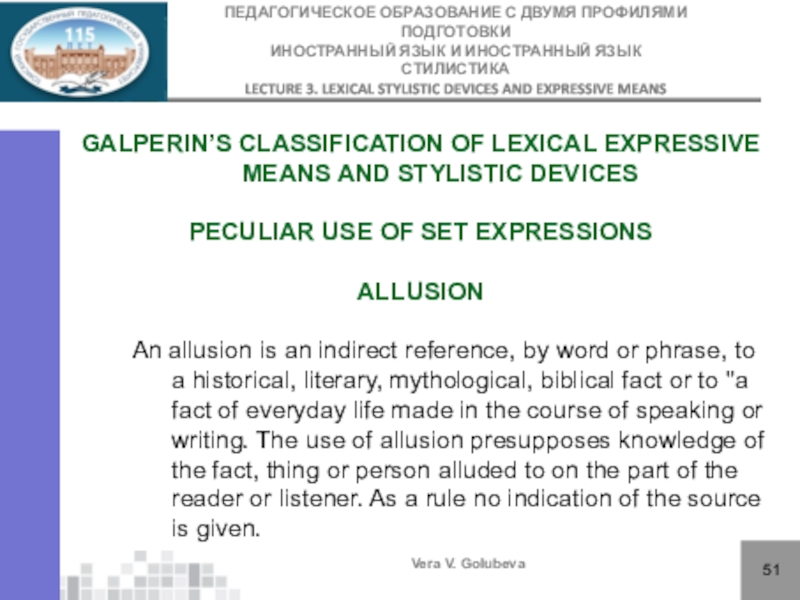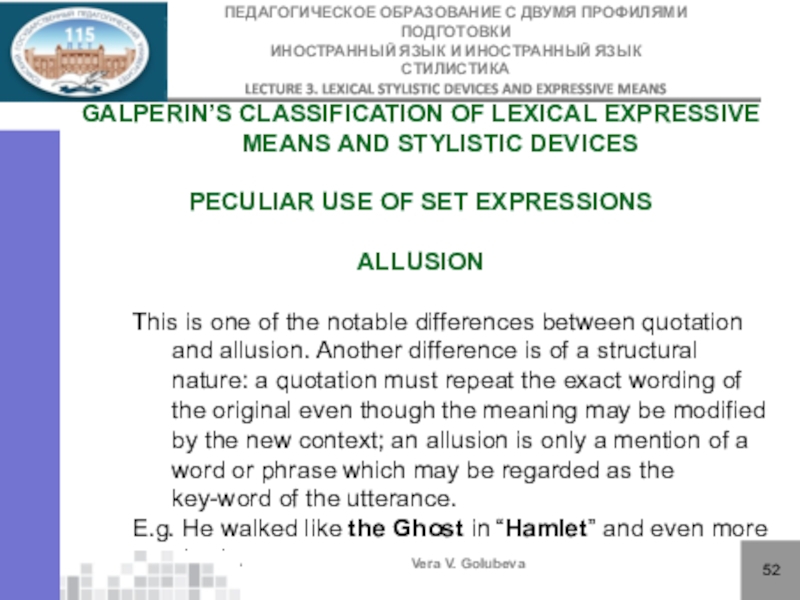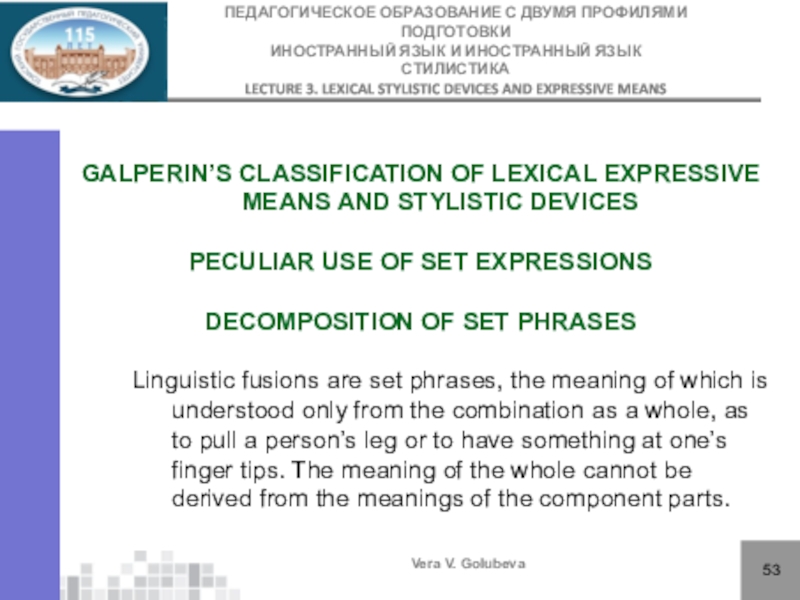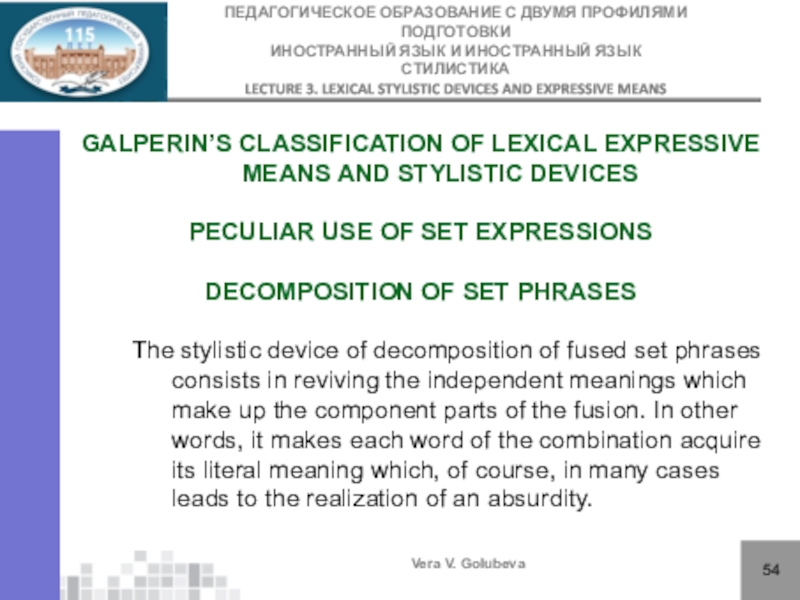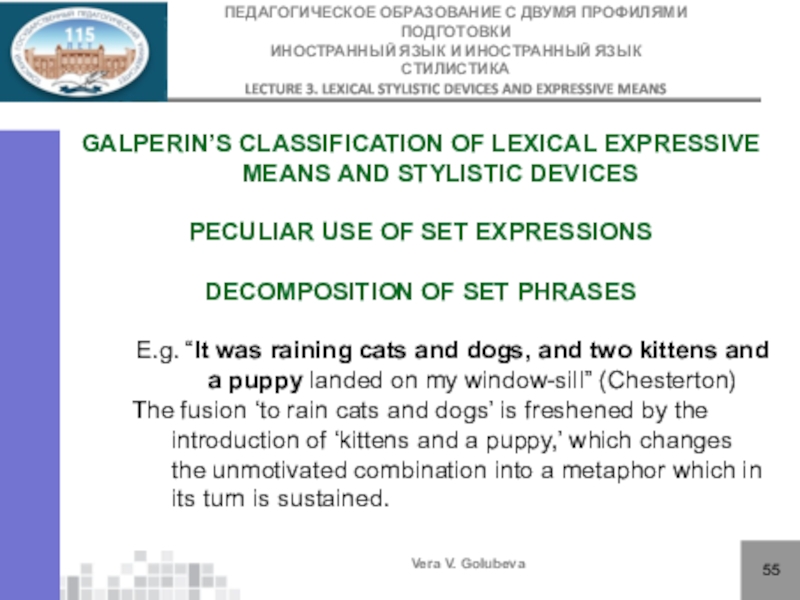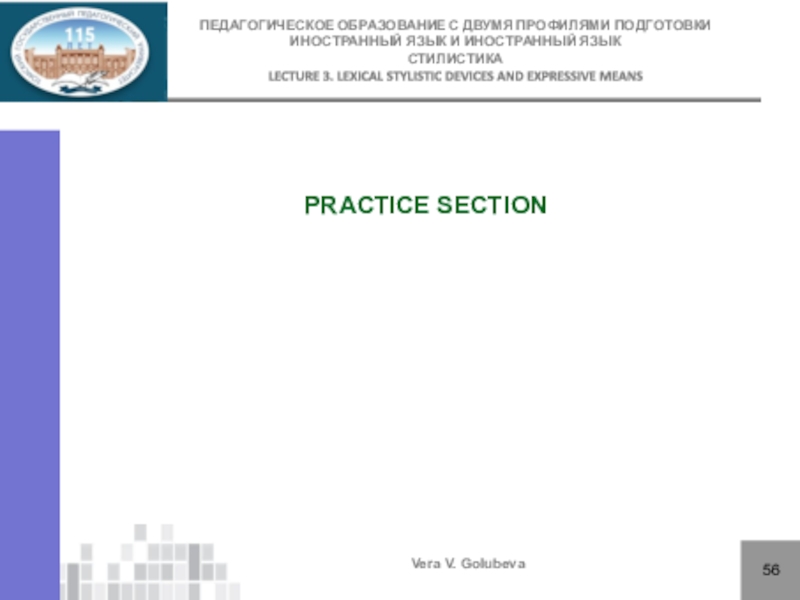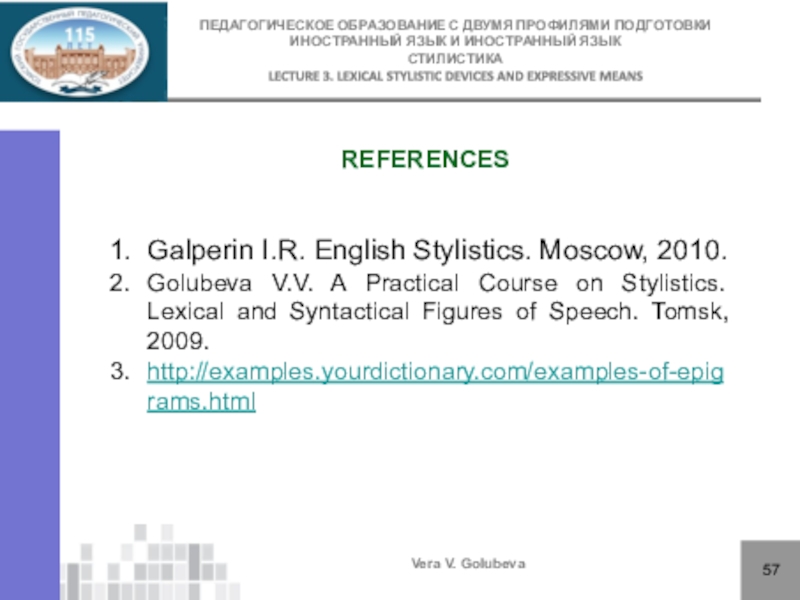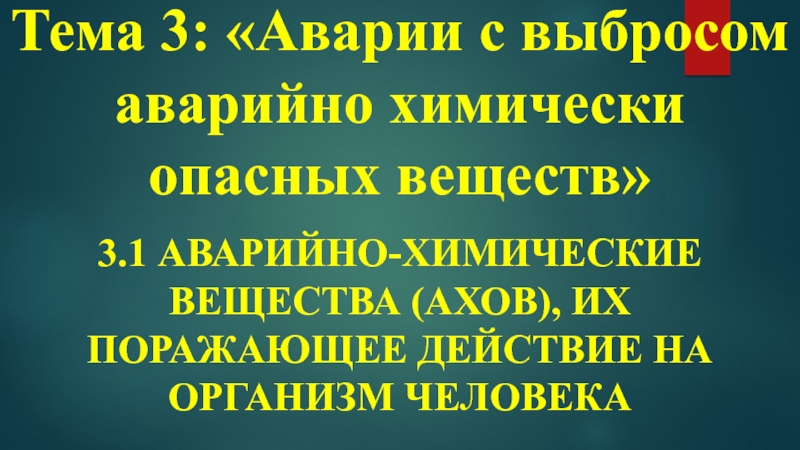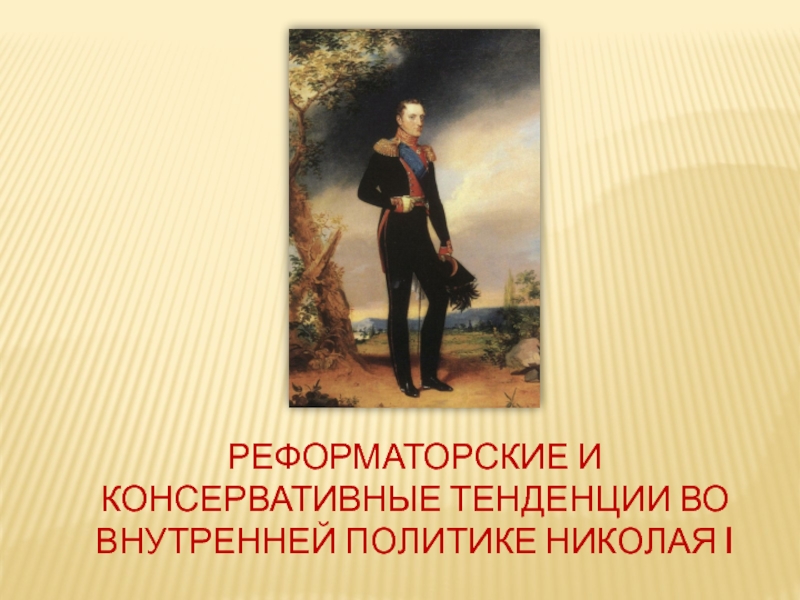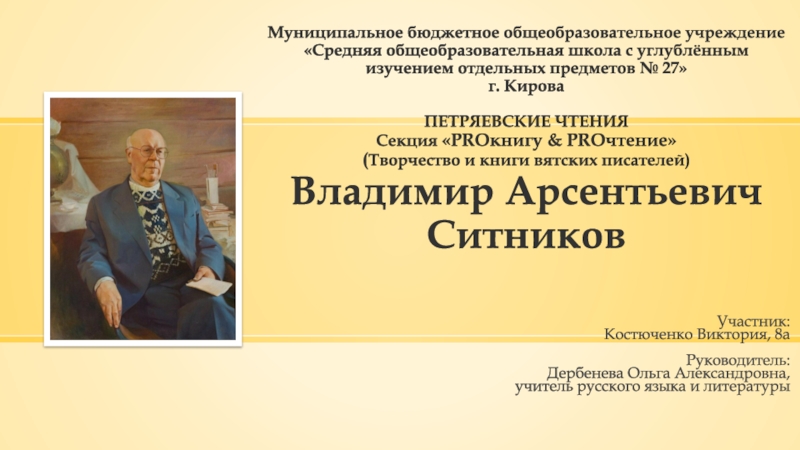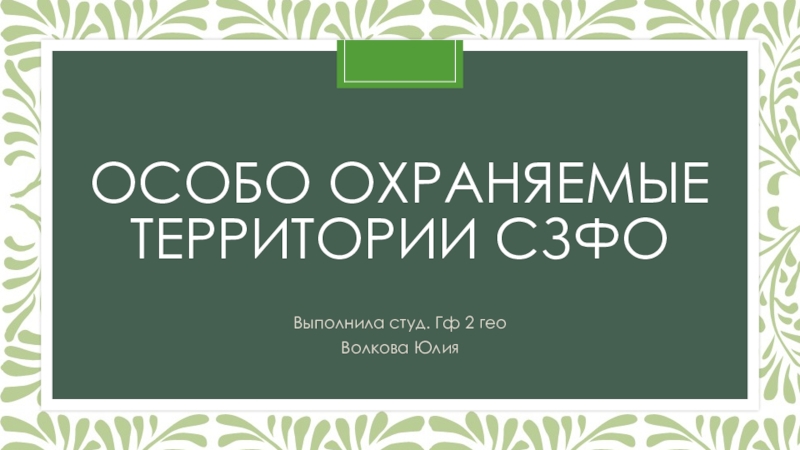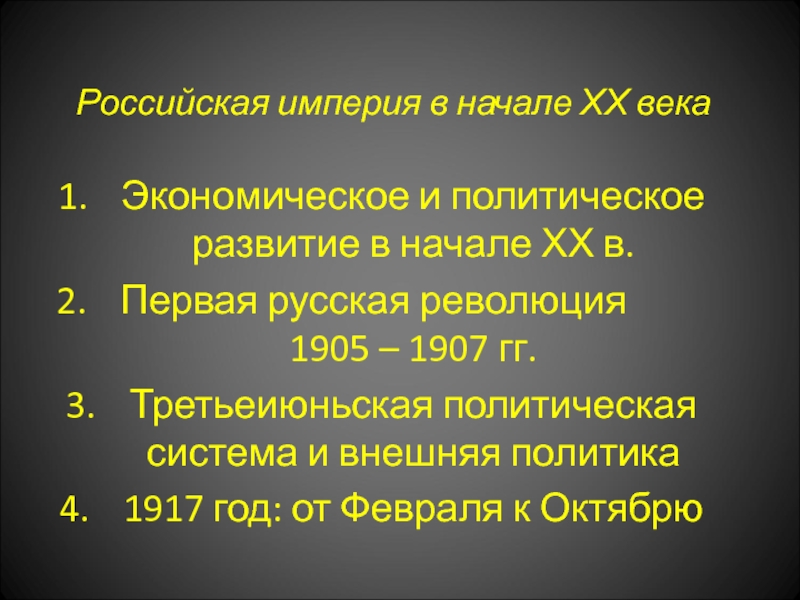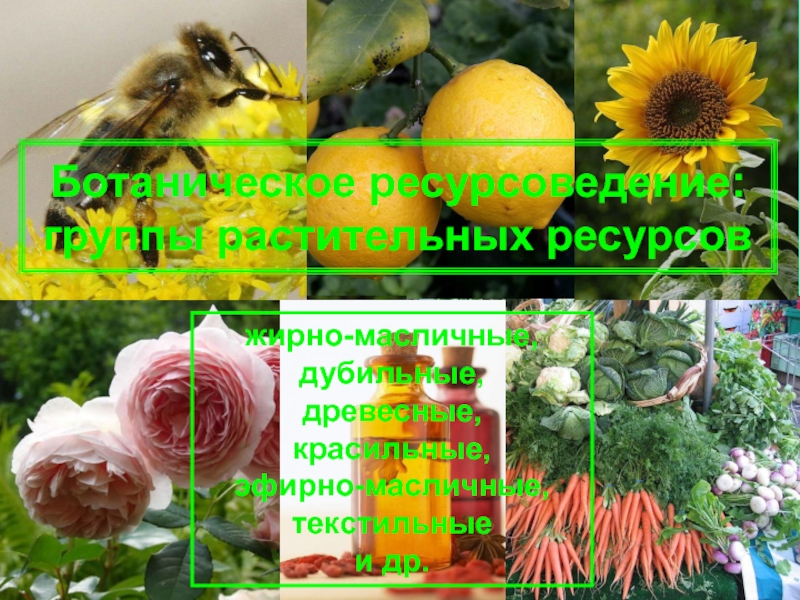Разделы презентаций
- Разное
- Английский язык
- Астрономия
- Алгебра
- Биология
- География
- Геометрия
- Детские презентации
- Информатика
- История
- Литература
- Математика
- Медицина
- Менеджмент
- Музыка
- МХК
- Немецкий язык
- ОБЖ
- Обществознание
- Окружающий мир
- Педагогика
- Русский язык
- Технология
- Физика
- Философия
- Химия
- Шаблоны, картинки для презентаций
- Экология
- Экономика
- Юриспруденция
06.09.2018 Vera V. Golubeva ПЕДАГОГИЧЕСКОЕ ОБРАЗОВАНИЕ С ДВУМЯ ПРОФИЛЯМИ
Содержание
- 1. 06.09.2018 Vera V. Golubeva ПЕДАГОГИЧЕСКОЕ ОБРАЗОВАНИЕ С ДВУМЯ ПРОФИЛЯМИ
- 2. ПЕДАГОГИЧЕСКОЕ ОБРАЗОВАНИЕ С ДВУМЯ ПРОФИЛЯМИ ПОДГОТОВКИ ИНОСТРАННЫЙ
- 3. ПЕДАГОГИЧЕСКОЕ ОБРАЗОВАНИЕ С ДВУМЯ ПРОФИЛЯМИ ПОДГОТОВКИ ИНОСТРАННЫЙ
- 4. ПЕДАГОГИЧЕСКОЕ ОБРАЗОВАНИЕ С ДВУМЯ ПРОФИЛЯМИ ПОДГОТОВКИ ИНОСТРАННЫЙ
- 5. ПЕДАГОГИЧЕСКОЕ ОБРАЗОВАНИЕ С ДВУМЯ ПРОФИЛЯМИ ПОДГОТОВКИ ИНОСТРАННЫЙ
- 6. ПЕДАГОГИЧЕСКОЕ ОБРАЗОВАНИЕ С ДВУМЯ ПРОФИЛЯМИ ПОДГОТОВКИ ИНОСТРАННЫЙ
- 7. ПЕДАГОГИЧЕСКОЕ ОБРАЗОВАНИЕ С ДВУМЯ ПРОФИЛЯМИ ПОДГОТОВКИ ИНОСТРАННЫЙ
- 8. ПЕДАГОГИЧЕСКОЕ ОБРАЗОВАНИЕ С ДВУМЯ ПРОФИЛЯМИ ПОДГОТОВКИ ИНОСТРАННЫЙ
- 9. ПЕДАГОГИЧЕСКОЕ ОБРАЗОВАНИЕ С ДВУМЯ ПРОФИЛЯМИ ПОДГОТОВКИ ИНОСТРАННЫЙ
- 10. ПЕДАГОГИЧЕСКОЕ ОБРАЗОВАНИЕ С ДВУМЯ ПРОФИЛЯМИ ПОДГОТОВКИ ИНОСТРАННЫЙ
- 11. ПЕДАГОГИЧЕСКОЕ ОБРАЗОВАНИЕ С ДВУМЯ ПРОФИЛЯМИ ПОДГОТОВКИ ИНОСТРАННЫЙ
- 12. ПЕДАГОГИЧЕСКОЕ ОБРАЗОВАНИЕ С ДВУМЯ ПРОФИЛЯМИ ПОДГОТОВКИ ИНОСТРАННЫЙ
- 13. ПЕДАГОГИЧЕСКОЕ ОБРАЗОВАНИЕ С ДВУМЯ ПРОФИЛЯМИ ПОДГОТОВКИ ИНОСТРАННЫЙ
- 14. ПЕДАГОГИЧЕСКОЕ ОБРАЗОВАНИЕ С ДВУМЯ ПРОФИЛЯМИ ПОДГОТОВКИ ИНОСТРАННЫЙ
- 15. ПЕДАГОГИЧЕСКОЕ ОБРАЗОВАНИЕ С ДВУМЯ ПРОФИЛЯМИ ПОДГОТОВКИ ИНОСТРАННЫЙ
- 16. ПЕДАГОГИЧЕСКОЕ ОБРАЗОВАНИЕ С ДВУМЯ ПРОФИЛЯМИ ПОДГОТОВКИ ИНОСТРАННЫЙ
- 17. ПЕДАГОГИЧЕСКОЕ ОБРАЗОВАНИЕ С ДВУМЯ ПРОФИЛЯМИ ПОДГОТОВКИ ИНОСТРАННЫЙ
- 18. ПЕДАГОГИЧЕСКОЕ ОБРАЗОВАНИЕ С ДВУМЯ ПРОФИЛЯМИ ПОДГОТОВКИ ИНОСТРАННЫЙ
- 19. ПЕДАГОГИЧЕСКОЕ ОБРАЗОВАНИЕ С ДВУМЯ ПРОФИЛЯМИ ПОДГОТОВКИ ИНОСТРАННЫЙ
- 20. ПЕДАГОГИЧЕСКОЕ ОБРАЗОВАНИЕ С ДВУМЯ ПРОФИЛЯМИ ПОДГОТОВКИ ИНОСТРАННЫЙ
- 21. ПЕДАГОГИЧЕСКОЕ ОБРАЗОВАНИЕ С ДВУМЯ ПРОФИЛЯМИ ПОДГОТОВКИ ИНОСТРАННЫЙ
- 22. ПЕДАГОГИЧЕСКОЕ ОБРАЗОВАНИЕ С ДВУМЯ ПРОФИЛЯМИ ПОДГОТОВКИ ИНОСТРАННЫЙ
- 23. ПЕДАГОГИЧЕСКОЕ ОБРАЗОВАНИЕ С ДВУМЯ ПРОФИЛЯМИ ПОДГОТОВКИ ИНОСТРАННЫЙ
- 24. ПЕДАГОГИЧЕСКОЕ ОБРАЗОВАНИЕ С ДВУМЯ ПРОФИЛЯМИ ПОДГОТОВКИ ИНОСТРАННЫЙ
- 25. ПРОГРАММА ПРОФЕССИОНАЛЬНОЙ ПОДГОТОВКИ «ПЕРЕВОДЧИК В СФЕРЕ ПРОФЕССИОНАЛЬНОЙ
- 26. ПЕДАГОГИЧЕСКОЕ ОБРАЗОВАНИЕ С ДВУМЯ ПРОФИЛЯМИ ПОДГОТОВКИ ИНОСТРАННЫЙ
- 27. ПЕДАГОГИЧЕСКОЕ ОБРАЗОВАНИЕ С ДВУМЯ ПРОФИЛЯМИ ПОДГОТОВКИ ИНОСТРАННЫЙ
- 28. ПЕДАГОГИЧЕСКОЕ ОБРАЗОВАНИЕ С ДВУМЯ ПРОФИЛЯМИ ПОДГОТОВКИ ИНОСТРАННЫЙ
- 29. ПЕДАГОГИЧЕСКОЕ ОБРАЗОВАНИЕ С ДВУМЯ ПРОФИЛЯМИ ПОДГОТОВКИ ИНОСТРАННЫЙ
- 30. ПЕДАГОГИЧЕСКОЕ ОБРАЗОВАНИЕ С ДВУМЯ ПРОФИЛЯМИ ПОДГОТОВКИ ИНОСТРАННЫЙ
- 31. ПЕДАГОГИЧЕСКОЕ ОБРАЗОВАНИЕ С ДВУМЯ ПРОФИЛЯМИ ПОДГОТОВКИ ИНОСТРАННЫЙ
- 32. ПЕДАГОГИЧЕСКОЕ ОБРАЗОВАНИЕ С ДВУМЯ ПРОФИЛЯМИ ПОДГОТОВКИ ИНОСТРАННЫЙ
- 33. ПЕДАГОГИЧЕСКОЕ ОБРАЗОВАНИЕ С ДВУМЯ ПРОФИЛЯМИ ПОДГОТОВКИ ИНОСТРАННЫЙ
- 34. ПЕДАГОГИЧЕСКОЕ ОБРАЗОВАНИЕ С ДВУМЯ ПРОФИЛЯМИ ПОДГОТОВКИ ИНОСТРАННЫЙ
- 35. ПЕДАГОГИЧЕСКОЕ ОБРАЗОВАНИЕ С ДВУМЯ ПРОФИЛЯМИ ПОДГОТОВКИ ИНОСТРАННЫЙ
- 36. ПЕДАГОГИЧЕСКОЕ ОБРАЗОВАНИЕ С ДВУМЯ ПРОФИЛЯМИ ПОДГОТОВКИ ИНОСТРАННЫЙ
- 37. ПЕДАГОГИЧЕСКОЕ ОБРАЗОВАНИЕ С ДВУМЯ ПРОФИЛЯМИ ПОДГОТОВКИ ИНОСТРАННЫЙ
- 38. ПЕДАГОГИЧЕСКОЕ ОБРАЗОВАНИЕ С ДВУМЯ ПРОФИЛЯМИ ПОДГОТОВКИ ИНОСТРАННЫЙ
- 39. ПЕДАГОГИЧЕСКОЕ ОБРАЗОВАНИЕ С ДВУМЯ ПРОФИЛЯМИ ПОДГОТОВКИ ИНОСТРАННЫЙ
- 40. ПЕДАГОГИЧЕСКОЕ ОБРАЗОВАНИЕ С ДВУМЯ ПРОФИЛЯМИ ПОДГОТОВКИ ИНОСТРАННЫЙ
- 41. ПЕДАГОГИЧЕСКОЕ ОБРАЗОВАНИЕ С ДВУМЯ ПРОФИЛЯМИ ПОДГОТОВКИ ИНОСТРАННЫЙ
- 42. ПЕДАГОГИЧЕСКОЕ ОБРАЗОВАНИЕ С ДВУМЯ ПРОФИЛЯМИ ПОДГОТОВКИ ИНОСТРАННЫЙ
- 43. ПЕДАГОГИЧЕСКОЕ ОБРАЗОВАНИЕ С ДВУМЯ ПРОФИЛЯМИ ПОДГОТОВКИ ИНОСТРАННЫЙ
- 44. ПЕДАГОГИЧЕСКОЕ ОБРАЗОВАНИЕ С ДВУМЯ ПРОФИЛЯМИ ПОДГОТОВКИ ИНОСТРАННЫЙ
- 45. ПЕДАГОГИЧЕСКОЕ ОБРАЗОВАНИЕ С ДВУМЯ ПРОФИЛЯМИ ПОДГОТОВКИ ИНОСТРАННЫЙ
- 46. ПЕДАГОГИЧЕСКОЕ ОБРАЗОВАНИЕ С ДВУМЯ ПРОФИЛЯМИ ПОДГОТОВКИ ИНОСТРАННЫЙ
- 47. ПЕДАГОГИЧЕСКОЕ ОБРАЗОВАНИЕ С ДВУМЯ ПРОФИЛЯМИ ПОДГОТОВКИ ИНОСТРАННЫЙ
- 48. ПЕДАГОГИЧЕСКОЕ ОБРАЗОВАНИЕ С ДВУМЯ ПРОФИЛЯМИ ПОДГОТОВКИ ИНОСТРАННЫЙ
- 49. ПЕДАГОГИЧЕСКОЕ ОБРАЗОВАНИЕ С ДВУМЯ ПРОФИЛЯМИ ПОДГОТОВКИ ИНОСТРАННЫЙ
- 50. ПЕДАГОГИЧЕСКОЕ ОБРАЗОВАНИЕ С ДВУМЯ ПРОФИЛЯМИ ПОДГОТОВКИ ИНОСТРАННЫЙ
- 51. ПЕДАГОГИЧЕСКОЕ ОБРАЗОВАНИЕ С ДВУМЯ ПРОФИЛЯМИ ПОДГОТОВКИ ИНОСТРАННЫЙ
- 52. ПЕДАГОГИЧЕСКОЕ ОБРАЗОВАНИЕ С ДВУМЯ ПРОФИЛЯМИ ПОДГОТОВКИ ИНОСТРАННЫЙ
- 53. ПЕДАГОГИЧЕСКОЕ ОБРАЗОВАНИЕ С ДВУМЯ ПРОФИЛЯМИ ПОДГОТОВКИ ИНОСТРАННЫЙ
- 54. ПЕДАГОГИЧЕСКОЕ ОБРАЗОВАНИЕ С ДВУМЯ ПРОФИЛЯМИ ПОДГОТОВКИ ИНОСТРАННЫЙ
- 55. ПЕДАГОГИЧЕСКОЕ ОБРАЗОВАНИЕ С ДВУМЯ ПРОФИЛЯМИ ПОДГОТОВКИ ИНОСТРАННЫЙ
- 56. ПЕДАГОГИЧЕСКОЕ ОБРАЗОВАНИЕ С ДВУМЯ ПРОФИЛЯМИ ПОДГОТОВКИ ИНОСТРАННЫЙ
- 57. ПЕДАГОГИЧЕСКОЕ ОБРАЗОВАНИЕ С ДВУМЯ ПРОФИЛЯМИ ПОДГОТОВКИ ИНОСТРАННЫЙ
- 58. Скачать презентанцию
ПЕДАГОГИЧЕСКОЕ ОБРАЗОВАНИЕ С ДВУМЯ ПРОФИЛЯМИ ПОДГОТОВКИ ИНОСТРАННЫЙ ЯЗЫК И ИНОСТРАННЫЙ ЯЗЫК СТИЛИСТИКА LECTURE 3. LEXICAL STYLISTIC DEVICES AND EXPRESSIVE MEANS2 Vera V. GolubevaPLANEXPRESSIVE MEANS AND STYLISTIC DEVICESTHE CLASSIFICATION OF EXPRESSIVE MEANS
Слайды и текст этой презентации
Слайд 106.09.2018
Vera V. Golubeva
ПЕДАГОГИЧЕСКОЕ ОБРАЗОВАНИЕ С ДВУМЯ ПРОФИЛЯМИ ПОДГОТОВКИ
ИНОСТРАННЫЙ ЯЗЫК И
ИНОСТРАННЫЙ ЯЗЫК
Слайд 2ПЕДАГОГИЧЕСКОЕ ОБРАЗОВАНИЕ С ДВУМЯ ПРОФИЛЯМИ ПОДГОТОВКИ ИНОСТРАННЫЙ ЯЗЫК И ИНОСТРАННЫЙ ЯЗЫК СТИЛИСТИКА LECTURE
3. LEXICAL STYLISTIC DEVICES AND EXPRESSIVE MEANS
2
Vera V. Golubeva
PLAN
EXPRESSIVE
MEANS AND STYLISTIC DEVICESTHE CLASSIFICATION OF EXPRESSIVE MEANS AND STYLISTIC DEVICES
GALPERIN’S CLASSIFICATION OF EXPRESSIVE MEANS AND STYLISTIC DEVICES
PRACTICE SECTION
Слайд 3ПЕДАГОГИЧЕСКОЕ ОБРАЗОВАНИЕ С ДВУМЯ ПРОФИЛЯМИ ПОДГОТОВКИ ИНОСТРАННЫЙ ЯЗЫК И ИНОСТРАННЫЙ ЯЗЫК СТИЛИСТИКА LECTURE
3. LEXICAL STYLISTIC DEVICES AND EXPRESSIVE MEANS
3
Vera V. Golubeva
EXPRESSIVE
MEANS AND STYLISTIC DEVICESEXPRESSIVE MEANS
Expressive means of a language are those linguistic forms and properties that have the potential to make the utterance emphatic or expressive. These can be found on all levels – phonetic, graphical, morphological, lexical or syntactical.
Expressive means and stylistic devices have a lot in common but they are not completely synonymous. All stylistic devices belong to expressive means but not all expressive means are stylistic devices.
Слайд 4ПЕДАГОГИЧЕСКОЕ ОБРАЗОВАНИЕ С ДВУМЯ ПРОФИЛЯМИ ПОДГОТОВКИ ИНОСТРАННЫЙ ЯЗЫК И ИНОСТРАННЫЙ ЯЗЫК СТИЛИСТИКА LECTURE
3. LEXICAL STYLISTIC DEVICES AND EXPRESSIVE MEANS
4
Vera V. Golubeva
EXPRESSIVE
MEANS AND STYLISTIC DEVICESEXPRESSIVE MEANS
Phonetic phenomena such as vocal pitch, pauses, logical stress, and drawling, or staccato pronunciation are all expressive without being stylistic devices.
Morphological forms like diminutive suffixes may have an expressive effect: girlie, piggy, doggy, etc.
Слайд 5ПЕДАГОГИЧЕСКОЕ ОБРАЗОВАНИЕ С ДВУМЯ ПРОФИЛЯМИ ПОДГОТОВКИ ИНОСТРАННЫЙ ЯЗЫК И ИНОСТРАННЫЙ ЯЗЫК СТИЛИСТИКА LECTURE
3. LEXICAL STYLISTIC DEVICES AND EXPRESSIVE MEANS
5
Vera V. Golubeva
EXPRESSIVE
MEANS AND STYLISTIC DEVICESEXPRESSIVE MEANS
Lexical expressive means may be illustrated by a special group оf intensifiers – awfully, terribly, absolutely, etc. or words that retain their logical meaning while being used emphatically: It was a very sped evening/event/gift.
There are also special grammatical forms and syntactical patterns attributing expressiveness, such as: I do know you! I’m really angry with that dog of уours! That you should deceive me! If only I could help you!
Слайд 6ПЕДАГОГИЧЕСКОЕ ОБРАЗОВАНИЕ С ДВУМЯ ПРОФИЛЯМИ ПОДГОТОВКИ ИНОСТРАННЫЙ ЯЗЫК И ИНОСТРАННЫЙ ЯЗЫК СТИЛИСТИКА LECTURE
3. LEXICAL STYLISTIC DEVICES AND EXPRESSIVE MEANS
6
Vera V. Golubeva
EXPRESSIVE
MEANS AND STYLISTIC DEVICESSTYLISTIC DEVICES
A stylistic device is a literary model in which semantic and structural features are blended so that it represents a generalised pattern.
Prof. I. R. Galperin calls a stylistic device a generative model when through frequent use a language fact is transformed into a stylistic device. A stylistic device is like an algorithm employed for an expressive purpose.
Слайд 7ПЕДАГОГИЧЕСКОЕ ОБРАЗОВАНИЕ С ДВУМЯ ПРОФИЛЯМИ ПОДГОТОВКИ ИНОСТРАННЫЙ ЯЗЫК И ИНОСТРАННЫЙ ЯЗЫК СТИЛИСТИКА LECTURE
3. LEXICAL STYLISTIC DEVICES AND EXPRESSIVE MEANS
7
Vera V. Golubeva
EXPRESSIVE
MEANS AND STYLISTIC DEVICESSTYLISTIC DEVICES
For example, the interplay, interaction, or clash of the dictionary and contextual meanings of words will bring about such stylistic devices as metaphor, metonymy or irony.
The nature of the interaction may be affinity (likeness by nature), proximity (nearness in place, time, order, occurrence, relation) or contrast (opposition).
Слайд 8ПЕДАГОГИЧЕСКОЕ ОБРАЗОВАНИЕ С ДВУМЯ ПРОФИЛЯМИ ПОДГОТОВКИ ИНОСТРАННЫЙ ЯЗЫК И ИНОСТРАННЫЙ ЯЗЫК СТИЛИСТИКА LECTURE
3. LEXICAL STYLISTIC DEVICES AND EXPRESSIVE MEANS
8
Vera V. Golubeva
THE
CLASSIFICATION OF EXPRESSIVE MEANS AND STYLISTIC DEVICESThe classification according to the level-oriented approach (Galperin)
Lexical expressive means and stylistic devices
Syntactical expressive means and stylistic devices
Phonetic expressive means and stylistic devices
Graphical expressive means and stylistic devices
Слайд 9ПЕДАГОГИЧЕСКОЕ ОБРАЗОВАНИЕ С ДВУМЯ ПРОФИЛЯМИ ПОДГОТОВКИ ИНОСТРАННЫЙ ЯЗЫК И ИНОСТРАННЫЙ ЯЗЫК СТИЛИСТИКА LECTURE
3. LEXICAL STYLISTIC DEVICES AND EXPRESSIVE MEANS
9
Vera V. Golubeva
GALPERIN’S
CLASSIFICATION OF LEXICAL EXPRESSIVE MEANS AND STYLISTIC DEVICESINTERACTION OF DIFFERENT TYPES OF LEXICAL MEANING
1) Interaction of primary dictionary and contextual meanings
Слайд 10ПЕДАГОГИЧЕСКОЕ ОБРАЗОВАНИЕ С ДВУМЯ ПРОФИЛЯМИ ПОДГОТОВКИ ИНОСТРАННЫЙ ЯЗЫК И ИНОСТРАННЫЙ ЯЗЫК СТИЛИСТИКА LECTURE
3. LEXICAL STYLISTIC DEVICES AND EXPRESSIVE MEANS
10
Vera V. Golubeva
GALPERIN’S
CLASSIFICATION OF LEXICAL EXPRESSIVE MEANS AND STYLISTIC DEVICESMetaphor and Personification
Metaphor is a lexical stylistic device in which one word is used to indicate something different from literary meaning so that one thing or idea is likened to a different idea. It is a transfer of meaning based on comparison between two unlike objects.
E.g. A machine was sitting at the table.
Слайд 11ПЕДАГОГИЧЕСКОЕ ОБРАЗОВАНИЕ С ДВУМЯ ПРОФИЛЯМИ ПОДГОТОВКИ ИНОСТРАННЫЙ ЯЗЫК И ИНОСТРАННЫЙ ЯЗЫК СТИЛИСТИКА LECTURE
3. LEXICAL STYLISTIC DEVICES AND EXPRESSIVE MEANS
11
Vera V. Golubeva
GALPERIN’S
CLASSIFICATION OF LEXICAL EXPRESSIVE MEANS AND STYLISTIC DEVICESMetaphor and Personification
Metaphors may be original or dead. Dead metaphors are conventional, automatic metaphorical expressions which are regarded as established literary meanings of words and cease to be metaphorical (e.g. a leg of the table).
Слайд 12ПЕДАГОГИЧЕСКОЕ ОБРАЗОВАНИЕ С ДВУМЯ ПРОФИЛЯМИ ПОДГОТОВКИ ИНОСТРАННЫЙ ЯЗЫК И ИНОСТРАННЫЙ ЯЗЫК СТИЛИСТИКА LECTURE
3. LEXICAL STYLISTIC DEVICES AND EXPRESSIVE MEANS
12
Vera V. Golubeva
GALPERIN’S
CLASSIFICATION OF LEXICAL EXPRESSIVE MEANS AND STYLISTIC DEVICESMetaphor and Personification
According to the structure, metaphors can be simple or prolonged (sustained). Simple metaphors are expressed by one word. Prolonged metaphors are those which create one image.
E.g. ‹…› the indignant fire which flashed from his eyes did not melt the glasses of his spectacles – so majestic was his wrath.
Слайд 13ПЕДАГОГИЧЕСКОЕ ОБРАЗОВАНИЕ С ДВУМЯ ПРОФИЛЯМИ ПОДГОТОВКИ ИНОСТРАННЫЙ ЯЗЫК И ИНОСТРАННЫЙ ЯЗЫК СТИЛИСТИКА LECTURE
3. LEXICAL STYLISTIC DEVICES AND EXPRESSIVE MEANS
13
Vera V. Golubeva
GALPERIN’S
CLASSIFICATION OF LEXICAL EXPRESSIVE MEANS AND STYLISTIC DEVICESMetaphor and Personification
Personification is a variant of metaphor where human properties are ascribed to lifeless objects.
E.g. Money burns a hole in my pocket.
Слайд 14ПЕДАГОГИЧЕСКОЕ ОБРАЗОВАНИЕ С ДВУМЯ ПРОФИЛЯМИ ПОДГОТОВКИ ИНОСТРАННЫЙ ЯЗЫК И ИНОСТРАННЫЙ ЯЗЫК СТИЛИСТИКА LECTURE
3. LEXICAL STYLISTIC DEVICES AND EXPRESSIVE MEANS
14
Vera V. Golubeva
GALPERIN’S
CLASSIFICATION OF LEXICAL EXPRESSIVE MEANS AND STYLISTIC DEVICESMetonymy and Synecdoche
Metonymy is the use of the name of one thing for that of another associated with or suggested by it. It is a transfer of meaning based on substitution of one object for another.
Слайд 15ПЕДАГОГИЧЕСКОЕ ОБРАЗОВАНИЕ С ДВУМЯ ПРОФИЛЯМИ ПОДГОТОВКИ ИНОСТРАННЫЙ ЯЗЫК И ИНОСТРАННЫЙ ЯЗЫК СТИЛИСТИКА LECTURE
3. LEXICAL STYLISTIC DEVICES AND EXPRESSIVE MEANS
15
Vera V. Golubeva
GALPERIN’S
CLASSIFICATION OF LEXICAL EXPRESSIVE MEANS AND STYLISTIC DEVICESMetonymy and Synecdoche
The most frequent types of metonymic relations are:
a piece of clothes for the person wearing it, e.g. The bonnet neared the top of the square.
container for content, e.g. The hall applauded.
material for object, e.g. She needs a glass.
Слайд 16ПЕДАГОГИЧЕСКОЕ ОБРАЗОВАНИЕ С ДВУМЯ ПРОФИЛЯМИ ПОДГОТОВКИ ИНОСТРАННЫЙ ЯЗЫК И ИНОСТРАННЫЙ ЯЗЫК СТИЛИСТИКА LECTURE
3. LEXICAL STYLISTIC DEVICES AND EXPRESSIVE MEANS
16
Vera V. Golubeva
GALPERIN’S
CLASSIFICATION OF LEXICAL EXPRESSIVE MEANS AND STYLISTIC DEVICESMetonymy and Synecdoche
The most frequent types of metonymic relations are:
producer for product, e.g. He is the person who bought that Rembrandt.
place for institution, e.g. Downing Street has made no comment.
institution for people, e.g. The Senate aren’t happy with this bill.
a place for the people in that place, e.g. The round game table was noisy and happy.
Слайд 17ПЕДАГОГИЧЕСКОЕ ОБРАЗОВАНИЕ С ДВУМЯ ПРОФИЛЯМИ ПОДГОТОВКИ ИНОСТРАННЫЙ ЯЗЫК И ИНОСТРАННЫЙ ЯЗЫК СТИЛИСТИКА LECTURE
3. LEXICAL STYLISTIC DEVICES AND EXPRESSIVE MEANS
17
Vera V. Golubeva
GALPERIN’S
CLASSIFICATION OF LEXICAL EXPRESSIVE MEANS AND STYLISTIC DEVICESMetonymy and Synecdoche
Synecdoche is a variant of metonymy which is based on quantitative relations.
part for the whole, e.g. Hands wanted!
whole for the part, e.g. Brazil has won the World Cup.
singular for plural, e.g. Wherever the kettledrums were heard, the peasant threw his bag of rice on his shoulder ‹…›.
Слайд 18ПЕДАГОГИЧЕСКОЕ ОБРАЗОВАНИЕ С ДВУМЯ ПРОФИЛЯМИ ПОДГОТОВКИ ИНОСТРАННЫЙ ЯЗЫК И ИНОСТРАННЫЙ ЯЗЫК СТИЛИСТИКА LECTURE
3. LEXICAL STYLISTIC DEVICES AND EXPRESSIVE MEANS
18
Vera V. Golubeva
GALPERIN’S
CLASSIFICATION OF LEXICAL EXPRESSIVE MEANS AND STYLISTIC DEVICESIrony
Irony is a transfer of meaning based upon the opposition of the two notions: the notion named and the notion implied. Irony is used with the aim of critical evaluation of the thing spoken about.
E.g. What a noble illustration of the tender laws of the favoured country! – they let the paupers go to sleep.
Слайд 19ПЕДАГОГИЧЕСКОЕ ОБРАЗОВАНИЕ С ДВУМЯ ПРОФИЛЯМИ ПОДГОТОВКИ ИНОСТРАННЫЙ ЯЗЫК И ИНОСТРАННЫЙ ЯЗЫК СТИЛИСТИКА LECTURE
3. LEXICAL STYLISTIC DEVICES AND EXPRESSIVE MEANS
19
Vera V. Golubeva
GALPERIN’S
CLASSIFICATION OF LEXICAL EXPRESSIVE MEANS AND STYLISTIC DEVICESINTERACTION OF DIFFERENT TYPES OF LEXICAL MEANING
2) Interaction of logical and emotive meanings
Слайд 20ПЕДАГОГИЧЕСКОЕ ОБРАЗОВАНИЕ С ДВУМЯ ПРОФИЛЯМИ ПОДГОТОВКИ ИНОСТРАННЫЙ ЯЗЫК И ИНОСТРАННЫЙ ЯЗЫК СТИЛИСТИКА LECTURE
3. LEXICAL STYLISTIC DEVICES AND EXPRESSIVE MEANS
20
Vera V. Golubeva
GALPERIN’S
CLASSIFICATION OF LEXICAL EXPRESSIVE MEANS AND STYLISTIC DEVICESEpithet
Epithet is an attributive word, phrase or even sentence, used to characterize an object and point out some of the properties or features of the object with the aim of giving an individual perception and evaluation of these features or properties.
Слайд 21ПЕДАГОГИЧЕСКОЕ ОБРАЗОВАНИЕ С ДВУМЯ ПРОФИЛЯМИ ПОДГОТОВКИ ИНОСТРАННЫЙ ЯЗЫК И ИНОСТРАННЫЙ ЯЗЫК СТИЛИСТИКА LECTURE
3. LEXICAL STYLISTIC DEVICES AND EXPRESSIVE MEANS
21
Vera V. Golubeva
GALPERIN’S
CLASSIFICATION OF LEXICAL EXPRESSIVE MEANS AND STYLISTIC DEVICESEpithet
Structurally epithets are subdivided into:
simple epithets, e.g. silver voice;
compound epithets. They are build like compound adjectives, e.g. a heart-burning smile;
phrase epithets, e.g. There is a sort of ‘Oh-what-a-wicked-world-this-is-and-how-I-wish-I-could-do-something-to-make-it-better-and-nobler’ expression about Montmorency that has been known to bring the tears into the eyes of pious old ladies and gentlemen.
Слайд 22ПЕДАГОГИЧЕСКОЕ ОБРАЗОВАНИЕ С ДВУМЯ ПРОФИЛЯМИ ПОДГОТОВКИ ИНОСТРАННЫЙ ЯЗЫК И ИНОСТРАННЫЙ ЯЗЫК СТИЛИСТИКА LECTURE
3. LEXICAL STYLISTIC DEVICES AND EXPRESSIVE MEANS
22
Vera V. Golubeva
GALPERIN’S
CLASSIFICATION OF LEXICAL EXPRESSIVE MEANS AND STYLISTIC DEVICESEpithet
Structurally epithets are subdivided into:
sentence epithets. They are usually expressed by a one-member nominal sentence, e.g. “Fool! Idiot! Lunatic!” She protested vehemently.
reversed epithets. They are composed of two nouns linked in an of-phrase. The subjective, evaluating, emotional element is embodied not in the noun attribute but in the noun structurally described, e.g. a devil of a job.
Слайд 23ПЕДАГОГИЧЕСКОЕ ОБРАЗОВАНИЕ С ДВУМЯ ПРОФИЛЯМИ ПОДГОТОВКИ ИНОСТРАННЫЙ ЯЗЫК И ИНОСТРАННЫЙ ЯЗЫК СТИЛИСТИКА LECTURE
3. LEXICAL STYLISTIC DEVICES AND EXPRESSIVE MEANS
23
Vera V. Golubeva
GALPERIN’S
CLASSIFICATION OF LEXICAL EXPRESSIVE MEANS AND STYLISTIC DEVICESEpithet
Epithets can also be divided into metaphorical and metonymical. A metaphorical epithet presents a metaphor within the epithet (e.g., aquiline nose) while metonymical epithets are ordinary logical attributes generally describing the state of a human being but made to refer to an inanimate object (e.g., a sleepless pillow).
Слайд 24ПЕДАГОГИЧЕСКОЕ ОБРАЗОВАНИЕ С ДВУМЯ ПРОФИЛЯМИ ПОДГОТОВКИ ИНОСТРАННЫЙ ЯЗЫК И ИНОСТРАННЫЙ ЯЗЫК СТИЛИСТИКА LECTURE
3. LEXICAL STYLISTIC DEVICES AND EXPRESSIVE MEANS
24
Vera V. Golubeva
GALPERIN’S
CLASSIFICATION OF LEXICAL EXPRESSIVE MEANS AND STYLISTIC DEVICESEpithet
Every epithet is an attribute but not every attribute is an epithet!!!
Cf. iron gate vs. iron hatred
silver ring vs. silver voice
But logical attributes in a chain of epithets undergo certain semantic changes and become epithets too, e.g. The money she had accepted was two soft, green, handsome ten-dollar bills.
Слайд 25ПРОГРАММА ПРОФЕССИОНАЛЬНОЙ ПОДГОТОВКИ «ПЕРЕВОДЧИК В СФЕРЕ ПРОФЕССИОНАЛЬНОЙ КОММУНИКАЦИИ» СТИЛИСТИКА LECTURE 4.
LEXICAL STYLISTIC DEVICES AND EXPRESSIVE MEANS
25
Vera V. Golubeva
GALPERIN’S CLASSIFICATION
OF LEXICAL EXPRESSIVE MEANS AND STYLISTIC DEVICESOxymoron
Oxymoron is a combination of two words opposite in meaning, e.g. a low skyscraper. There are some frequently used oxymorons in which the first element has lost its original logical meaning and has become a synonym to ‘very’, e.g. awfully nice, dreadfully sorry, pretty bad, etc.
Слайд 26ПЕДАГОГИЧЕСКОЕ ОБРАЗОВАНИЕ С ДВУМЯ ПРОФИЛЯМИ ПОДГОТОВКИ ИНОСТРАННЫЙ ЯЗЫК И ИНОСТРАННЫЙ ЯЗЫК СТИЛИСТИКА LECTURE
3. LEXICAL STYLISTIC DEVICES AND EXPRESSIVE MEANS
26
Vera V. Golubeva
GALPERIN’S
CLASSIFICATION OF LEXICAL EXPRESSIVE MEANS AND STYLISTIC DEVICESINTERACTION OF DIFFERENT TYPES OF LEXICAL MEANING
3) Interaction of logical and nominal meanings
Слайд 27ПЕДАГОГИЧЕСКОЕ ОБРАЗОВАНИЕ С ДВУМЯ ПРОФИЛЯМИ ПОДГОТОВКИ ИНОСТРАННЫЙ ЯЗЫК И ИНОСТРАННЫЙ ЯЗЫК СТИЛИСТИКА LECTURE
3. LEXICAL STYLISTIC DEVICES AND EXPRESSIVE MEANS
27
Vera V. Golubeva
GALPERIN’S
CLASSIFICATION OF LEXICAL EXPRESSIVE MEANS AND STYLISTIC DEVICESAntonomasia
Antonomasia is based on the use of the name of a historical, literary, mythological or biblical personage applied to a person described, i.e. a proper noun is used instead of a common noun, e.g. Every Caesar has his Brutus. She is a regular Sherlock Holmes.
Слайд 28ПЕДАГОГИЧЕСКОЕ ОБРАЗОВАНИЕ С ДВУМЯ ПРОФИЛЯМИ ПОДГОТОВКИ ИНОСТРАННЫЙ ЯЗЫК И ИНОСТРАННЫЙ ЯЗЫК СТИЛИСТИКА LECTURE
3. LEXICAL STYLISTIC DEVICES AND EXPRESSIVE MEANS
28
Vera V. Golubeva
GALPERIN’S
CLASSIFICATION OF LEXICAL EXPRESSIVE MEANS AND STYLISTIC DEVICESAntonomasia
There are also cases when a common noun is used instead of a proper noun, e.g.“There are three doctors in an illness like yours. I don’t mean only myself, my partner and the radiologist who does your X-rays, the three I’m referring to are Dr. Rest, Dr. Diet and Dr. Fresh Air.”
Слайд 29ПЕДАГОГИЧЕСКОЕ ОБРАЗОВАНИЕ С ДВУМЯ ПРОФИЛЯМИ ПОДГОТОВКИ ИНОСТРАННЫЙ ЯЗЫК И ИНОСТРАННЫЙ ЯЗЫК СТИЛИСТИКА LECTURE
3. LEXICAL STYLISTIC DEVICES AND EXPRESSIVE MEANS
29
Vera V. Golubeva
GALPERIN’S
CLASSIFICATION OF LEXICAL EXPRESSIVE MEANS AND STYLISTIC DEVICESAntonomasia
Speaking names are also cases of antonomasia, e.g. Miss Languish – Мисс Томней; Mr. Backbite – М-р Клевентаун; Mr. Credulous – М-р Доверч; Mr. Snake – М-р Гад, Lord Chatterino – Лорд Балаболо; John Jaw – Джон Брех; Island Leap-High – Остров Высокопрыгия.
Слайд 30ПЕДАГОГИЧЕСКОЕ ОБРАЗОВАНИЕ С ДВУМЯ ПРОФИЛЯМИ ПОДГОТОВКИ ИНОСТРАННЫЙ ЯЗЫК И ИНОСТРАННЫЙ ЯЗЫК СТИЛИСТИКА LECTURE
3. LEXICAL STYLISTIC DEVICES AND EXPRESSIVE MEANS
30
Vera V. Golubeva
GALPERIN’S
CLASSIFICATION OF LEXICAL EXPRESSIVE MEANS AND STYLISTIC DEVICESINTERACTION OF DIFFERENT TYPES OF LEXICAL MEANING
3) Interaction of primary and derivative meanings
Слайд 31ПЕДАГОГИЧЕСКОЕ ОБРАЗОВАНИЕ С ДВУМЯ ПРОФИЛЯМИ ПОДГОТОВКИ ИНОСТРАННЫЙ ЯЗЫК И ИНОСТРАННЫЙ ЯЗЫК СТИЛИСТИКА LECTURE
3. LEXICAL STYLISTIC DEVICES AND EXPRESSIVE MEANS
31
Vera V. Golubeva
GALPERIN’S
CLASSIFICATION OF LEXICAL EXPRESSIVE MEANS AND STYLISTIC DEVICESZeugma and Pun (Play upon Words)
Zeugma and pun are based on the use of a polysemantic word, which is realized in two meanings. In pun the polysemantic word is repeated while in zeugma there is no repetition.
Слайд 32ПЕДАГОГИЧЕСКОЕ ОБРАЗОВАНИЕ С ДВУМЯ ПРОФИЛЯМИ ПОДГОТОВКИ ИНОСТРАННЫЙ ЯЗЫК И ИНОСТРАННЫЙ ЯЗЫК СТИЛИСТИКА LECTURE
3. LEXICAL STYLISTIC DEVICES AND EXPRESSIVE MEANS
32
Vera V. Golubeva
GALPERIN’S
CLASSIFICATION OF LEXICAL EXPRESSIVE MEANS AND STYLISTIC DEVICESZeugma and Pun (Play upon Words)
E.g. “Have you been seeing any spirits?” inquired the old gentleman. “Or taking any?” asked Bob Allen (zeugma).
“She always glances up, and glances down, and doesn’t know where to look, but looks all the prettier” (pun).
За песчаной косой лопоухий косой пал под острой косой косой бабы с косой (pun).
Слайд 33ПЕДАГОГИЧЕСКОЕ ОБРАЗОВАНИЕ С ДВУМЯ ПРОФИЛЯМИ ПОДГОТОВКИ ИНОСТРАННЫЙ ЯЗЫК И ИНОСТРАННЫЙ ЯЗЫК СТИЛИСТИКА LECTURE
3. LEXICAL STYLISTIC DEVICES AND EXPRESSIVE MEANS
33
Vera V. Golubeva
GALPERIN’S
CLASSIFICATION OF LEXICAL EXPRESSIVE MEANS AND STYLISTIC DEVICESII. INTENSIFICATION OF A CERTAIN FEATURE OF A THING OR PHENOMENON
Слайд 34ПЕДАГОГИЧЕСКОЕ ОБРАЗОВАНИЕ С ДВУМЯ ПРОФИЛЯМИ ПОДГОТОВКИ ИНОСТРАННЫЙ ЯЗЫК И ИНОСТРАННЫЙ ЯЗЫК СТИЛИСТИКА LECTURE
3. LEXICAL STYLISTIC DEVICES AND EXPRESSIVE MEANS
34
Vera V. Golubeva
GALPERIN’S
CLASSIFICATION OF LEXICAL EXPRESSIVE MEANS AND STYLISTIC DEVICESSimile
Simile is a comparison of two unlike objects belonging to two different classes. The comparison is evident due to the use of either grammatical or lexical means implying comparison, e.g. His crowded busy brain was like a city which feels the earth tremble at a distant earthquake shock.
Слайд 35ПЕДАГОГИЧЕСКОЕ ОБРАЗОВАНИЕ С ДВУМЯ ПРОФИЛЯМИ ПОДГОТОВКИ ИНОСТРАННЫЙ ЯЗЫК И ИНОСТРАННЫЙ ЯЗЫК СТИЛИСТИКА LECTURE
3. LEXICAL STYLISTIC DEVICES AND EXPRESSIVE MEANS
35
Vera V. Golubeva
GALPERIN’S
CLASSIFICATION OF LEXICAL EXPRESSIVE MEANS AND STYLISTIC DEVICESSimile
Every simile is a comparison but not every comparison is a simile, i.e. a stylistic device!!!
Cf. She is as tall as I am vs. She is as beautiful as a rose.
Слайд 36ПЕДАГОГИЧЕСКОЕ ОБРАЗОВАНИЕ С ДВУМЯ ПРОФИЛЯМИ ПОДГОТОВКИ ИНОСТРАННЫЙ ЯЗЫК И ИНОСТРАННЫЙ ЯЗЫК СТИЛИСТИКА LECTURE
3. LEXICAL STYLISTIC DEVICES AND EXPRESSIVE MEANS
36
Vera V. Golubeva
GALPERIN’S
CLASSIFICATION OF LEXICAL EXPRESSIVE MEANS AND STYLISTIC DEVICESPeriphrasis, Euphemism and Dispemism
Periphrasis is a longer form of expression which is used instead of a shorter one, e.g. The hospital was crowded with the surgically interesting products of the fighting in Africa.
Слайд 37ПЕДАГОГИЧЕСКОЕ ОБРАЗОВАНИЕ С ДВУМЯ ПРОФИЛЯМИ ПОДГОТОВКИ ИНОСТРАННЫЙ ЯЗЫК И ИНОСТРАННЫЙ ЯЗЫК СТИЛИСТИКА LECTURE
3. LEXICAL STYLISTIC DEVICES AND EXPRESSIVE MEANS
37
Vera V. Golubeva
GALPERIN’S
CLASSIFICATION OF LEXICAL EXPRESSIVE MEANS AND STYLISTIC DEVICESPeriphrasis, Euphemism and Dispemism
Euphemism is a variant of periphrasis when a ‘softer’, more polite form of expression is used instead of a rough and vulgar one, e.g. Afro-Americans instead of Negroes.
Disphemism is the opposite of euphemism. It is the use of a rougher form instead of a softer one, e.g. ‘to kick the bucket’ instead of ‘to die’.
Слайд 38ПЕДАГОГИЧЕСКОЕ ОБРАЗОВАНИЕ С ДВУМЯ ПРОФИЛЯМИ ПОДГОТОВКИ ИНОСТРАННЫЙ ЯЗЫК И ИНОСТРАННЫЙ ЯЗЫК СТИЛИСТИКА LECTURE
3. LEXICAL STYLISTIC DEVICES AND EXPRESSIVE MEANS
38
Vera V. Golubeva
GALPERIN’S
CLASSIFICATION OF LEXICAL EXPRESSIVE MEANS AND STYLISTIC DEVICESHyperbole and Understatement
Hyperbole is a deliberate exaggeration of a feature essential to the object or phenomenon. E.g. It was the last game of the year and you were supposed to commit suicide or something if Old Pencey didn’t win.
Some hyperboles have lost their stylistic quality through frequent usage and become dead, e.g. scared to death, thousand pardons, etc.
Слайд 39ПЕДАГОГИЧЕСКОЕ ОБРАЗОВАНИЕ С ДВУМЯ ПРОФИЛЯМИ ПОДГОТОВКИ ИНОСТРАННЫЙ ЯЗЫК И ИНОСТРАННЫЙ ЯЗЫК СТИЛИСТИКА LECTURE
3. LEXICAL STYLISTIC DEVICES AND EXPRESSIVE MEANS
39
Vera V. Golubeva
GALPERIN’S
CLASSIFICATION OF LEXICAL EXPRESSIVE MEANS AND STYLISTIC DEVICESHyperbole and Understatement
Understatement is a hyperbole which works in the opposite direction; it emphasizes the smallness of some object or phenomenon, e.g. The train moved at a snail’s pace.
Слайд 40ПЕДАГОГИЧЕСКОЕ ОБРАЗОВАНИЕ С ДВУМЯ ПРОФИЛЯМИ ПОДГОТОВКИ ИНОСТРАННЫЙ ЯЗЫК И ИНОСТРАННЫЙ ЯЗЫК СТИЛИСТИКА LECTURE
3. LEXICAL STYLISTIC DEVICES AND EXPRESSIVE MEANS
40
Vera V. Golubeva
GALPERIN’S
CLASSIFICATION OF LEXICAL EXPRESSIVE MEANS AND STYLISTIC DEVICESIII. INTENTIONAL MIXING OF THE STYLISTIC ASPECTS OF WORD
Слайд 41ПЕДАГОГИЧЕСКОЕ ОБРАЗОВАНИЕ С ДВУМЯ ПРОФИЛЯМИ ПОДГОТОВКИ ИНОСТРАННЫЙ ЯЗЫК И ИНОСТРАННЫЙ ЯЗЫК СТИЛИСТИКА LECTURE
3. LEXICAL STYLISTIC DEVICES AND EXPRESSIVE MEANS
41
Vera V. Golubeva
GALPERIN’S
CLASSIFICATION OF LEXICAL EXPRESSIVE MEANS AND STYLISTIC DEVICESBathos
Bathos is a stylistic device which is based on incongruity between:
a serious idea and a colloquial phrase used to express this idea, e.g. Molly was dead, to begin with. “Will you oblige me by keeping your trap shut, darling?” he retorted.
Слайд 42ПЕДАГОГИЧЕСКОЕ ОБРАЗОВАНИЕ С ДВУМЯ ПРОФИЛЯМИ ПОДГОТОВКИ ИНОСТРАННЫЙ ЯЗЫК И ИНОСТРАННЫЙ ЯЗЫК СТИЛИСТИКА LECTURE
3. LEXICAL STYLISTIC DEVICES AND EXPRESSIVE MEANS
42
Vera V. Golubeva
GALPERIN’S
CLASSIFICATION OF LEXICAL EXPRESSIVE MEANS AND STYLISTIC DEVICESBathos
a trivial idea and an elevated phrase used to express this idea,
e.g. Дамы города N отличались, подобно дамам петербургским, необыкновенной осторожностью и приличием в словах и выражениях. Никогда не говорили они я высморкалась ‹…›, а говорили: я облегчила нос, я обошлась посредством платка.
Слайд 43ПЕДАГОГИЧЕСКОЕ ОБРАЗОВАНИЕ С ДВУМЯ ПРОФИЛЯМИ ПОДГОТОВКИ ИНОСТРАННЫЙ ЯЗЫК И ИНОСТРАННЫЙ ЯЗЫК СТИЛИСТИКА LECTURE
3. LEXICAL STYLISTIC DEVICES AND EXPRESSIVE MEANS
43
Vera V. Golubeva
GALPERIN’S
CLASSIFICATION OF LEXICAL EXPRESSIVE MEANS AND STYLISTIC DEVICESPECULIAR USE OF SET EXPRESSIONS
CLICHÉ
A cliche is generally defined as an expression that has become hackneyed and trite.
E.g. 'to withstand the test of time', 'to let bygones be bygones', 'to have an ace up one's sleeve'
Слайд 44ПЕДАГОГИЧЕСКОЕ ОБРАЗОВАНИЕ С ДВУМЯ ПРОФИЛЯМИ ПОДГОТОВКИ ИНОСТРАННЫЙ ЯЗЫК И ИНОСТРАННЫЙ ЯЗЫК СТИЛИСТИКА LECTURE
3. LEXICAL STYLISTIC DEVICES AND EXPRESSIVE MEANS
44
Vera V. Golubeva
GALPERIN’S
CLASSIFICATION OF LEXICAL EXPRESSIVE MEANS AND STYLISTIC DEVICESPECULIAR USE OF SET EXPRESSIONS
PROVERBS AND SAYINGS
Proverbs and sayings are facts of language. There are special dictionaries of proverbs and sayings. It is impossible to arrange proverbs and sayings in a form that would present a pattern even though they have some typical features by which it is possible to determine whether or not we are dealing with one.
Слайд 45ПЕДАГОГИЧЕСКОЕ ОБРАЗОВАНИЕ С ДВУМЯ ПРОФИЛЯМИ ПОДГОТОВКИ ИНОСТРАННЫЙ ЯЗЫК И ИНОСТРАННЫЙ ЯЗЫК СТИЛИСТИКА LECTURE
3. LEXICAL STYLISTIC DEVICES AND EXPRESSIVE MEANS
45
Vera V. Golubeva
GALPERIN’S
CLASSIFICATION OF LEXICAL EXPRESSIVE MEANS AND STYLISTIC DEVICESPECULIAR USE OF SET EXPRESSIONS
PROVERBS AND SAYINGS
These typical features are: rhythm, sometimes rhyme and/or alliteration. But the most characteristic feature of a proverb or a saying lies not in its formal linguistic expression, but in the content-form of the utterance. E.g.
Early to bed and early to rise,
Makes a man healthy, wealthy and wise.
Слайд 46ПЕДАГОГИЧЕСКОЕ ОБРАЗОВАНИЕ С ДВУМЯ ПРОФИЛЯМИ ПОДГОТОВКИ ИНОСТРАННЫЙ ЯЗЫК И ИНОСТРАННЫЙ ЯЗЫК СТИЛИСТИКА LECTURE
3. LEXICAL STYLISTIC DEVICES AND EXPRESSIVE MEANS
46
Vera V. Golubeva
GALPERIN’S
CLASSIFICATION OF LEXICAL EXPRESSIVE MEANS AND STYLISTIC DEVICESPECULIAR USE OF SET EXPRESSIONS
EPIGRAMS
An epigram is a stylistic device akin to a proverb, the only difference being that epigrams are coined by individuals whose names we know, while proverbs are the coinage of the people. In other words, we are always aware of the parentage of an epigram and therefore, when using one, we usually make a reference to its author.
Слайд 47ПЕДАГОГИЧЕСКОЕ ОБРАЗОВАНИЕ С ДВУМЯ ПРОФИЛЯМИ ПОДГОТОВКИ ИНОСТРАННЫЙ ЯЗЫК И ИНОСТРАННЫЙ ЯЗЫК СТИЛИСТИКА LECTURE
3. LEXICAL STYLISTIC DEVICES AND EXPRESSIVE MEANS
47
Vera V. Golubeva
GALPERIN’S
CLASSIFICATION OF LEXICAL EXPRESSIVE MEANS AND STYLISTIC DEVICESPECULIAR USE OF SET EXPRESSIONS
EPIGRAMS
Epigrams are witty, pointed statements, showing the ingenious turn of mind of the originator. E.g.
“I can resist everything but temptation.” (Oscar Wilde) “It is better to light a candle than curse the darkness.” (Eleanor Roosevelt)
“Mankind must put an end to war, or war will put and end to mankind.” (John F. Kennedy)
Слайд 48ПЕДАГОГИЧЕСКОЕ ОБРАЗОВАНИЕ С ДВУМЯ ПРОФИЛЯМИ ПОДГОТОВКИ ИНОСТРАННЫЙ ЯЗЫК И ИНОСТРАННЫЙ ЯЗЫК СТИЛИСТИКА LECTURE
3. LEXICAL STYLISTIC DEVICES AND EXPRESSIVE MEANS
48
Vera V. Golubeva
GALPERIN’S
CLASSIFICATION OF LEXICAL EXPRESSIVE MEANS AND STYLISTIC DEVICESPECULIAR USE OF SET EXPRESSIONS
EPIGRAMS
The reasons for using epigrams are plentiful:
They cause the reader or listener to think a bit more about the statement being made.
They are examples of pure humor.
They all leave an impression.
Слайд 49ПЕДАГОГИЧЕСКОЕ ОБРАЗОВАНИЕ С ДВУМЯ ПРОФИЛЯМИ ПОДГОТОВКИ ИНОСТРАННЫЙ ЯЗЫК И ИНОСТРАННЫЙ ЯЗЫК СТИЛИСТИКА LECTURE
3. LEXICAL STYLISTIC DEVICES AND EXPRESSIVE MEANS
49
Vera V. Golubeva
GALPERIN’S
CLASSIFICATION OF LEXICAL EXPRESSIVE MEANS AND STYLISTIC DEVICESPECULIAR USE OF SET EXPRESSIONS
QUOTATIONS
A quotation is a repetition of a phrase or statement from a book, speech and the like used by way of authority, illustration, proof or as a basis for further speculation on the matter in hand.
By repeating a passage in a new environment, we attach to the utterance an importance it might not have had in the context whence it was taken.
Слайд 50ПЕДАГОГИЧЕСКОЕ ОБРАЗОВАНИЕ С ДВУМЯ ПРОФИЛЯМИ ПОДГОТОВКИ ИНОСТРАННЫЙ ЯЗЫК И ИНОСТРАННЫЙ ЯЗЫК СТИЛИСТИКА LECTURE
3. LEXICAL STYLISTIC DEVICES AND EXPRESSIVE MEANS
50
Vera V. Golubeva
GALPERIN’S
CLASSIFICATION OF LEXICAL EXPRESSIVE MEANS AND STYLISTIC DEVICESPECULIAR USE OF SET EXPRESSIONS
QUOTATIONS
Moreover, we give it the status, temporary though it may be, of a stable language unit. What is quoted must be worth quoting, since a quotation will inevitably acquire some degree of generalization. If repeated frequently, it may be recognized as an epigram, if, of course, it has at least some of the linguistic properties of the latter.
Слайд 51ПЕДАГОГИЧЕСКОЕ ОБРАЗОВАНИЕ С ДВУМЯ ПРОФИЛЯМИ ПОДГОТОВКИ ИНОСТРАННЫЙ ЯЗЫК И ИНОСТРАННЫЙ ЯЗЫК СТИЛИСТИКА LECTURE
3. LEXICAL STYLISTIC DEVICES AND EXPRESSIVE MEANS
51
Vera V. Golubeva
GALPERIN’S
CLASSIFICATION OF LEXICAL EXPRESSIVE MEANS AND STYLISTIC DEVICESPECULIAR USE OF SET EXPRESSIONS
ALLUSION
An allusion is an indirect reference, by word or phrase, to a historical, literary, mythological, biblical fact or to "a fact of everyday life made in the course of speaking or writing. The use of allusion presupposes knowledge of the fact, thing or person alluded to on the part of the reader or listener. As a rule no indication of the source is given.
Слайд 52ПЕДАГОГИЧЕСКОЕ ОБРАЗОВАНИЕ С ДВУМЯ ПРОФИЛЯМИ ПОДГОТОВКИ ИНОСТРАННЫЙ ЯЗЫК И ИНОСТРАННЫЙ ЯЗЫК СТИЛИСТИКА LECTURE
3. LEXICAL STYLISTIC DEVICES AND EXPRESSIVE MEANS
52
Vera V. Golubeva
GALPERIN’S
CLASSIFICATION OF LEXICAL EXPRESSIVE MEANS AND STYLISTIC DEVICESPECULIAR USE OF SET EXPRESSIONS
ALLUSION
This is one of the notable differences between quotation and allusion. Another difference is of a structural nature: a quotation must repeat the exact wording of the original even though the meaning may be modified by the new context; an allusion is only a mention of a word or phrase which may be regarded as the key-word of the utterance.
E.g. He walked like the Ghost in “Hamlet” and even more slowly.
Слайд 53ПЕДАГОГИЧЕСКОЕ ОБРАЗОВАНИЕ С ДВУМЯ ПРОФИЛЯМИ ПОДГОТОВКИ ИНОСТРАННЫЙ ЯЗЫК И ИНОСТРАННЫЙ ЯЗЫК СТИЛИСТИКА LECTURE
3. LEXICAL STYLISTIC DEVICES AND EXPRESSIVE MEANS
53
Vera V. Golubeva
GALPERIN’S
CLASSIFICATION OF LEXICAL EXPRESSIVE MEANS AND STYLISTIC DEVICESPECULIAR USE OF SET EXPRESSIONS
DECOMPOSITION OF SET PHRASES
Linguistic fusions are set phrases, the meaning of which is understood only from the combination as a whole, as to pull a person’s leg or to have something at one’s finger tips. The meaning of the whole cannot be derived from the meanings of the component parts.
Слайд 54ПЕДАГОГИЧЕСКОЕ ОБРАЗОВАНИЕ С ДВУМЯ ПРОФИЛЯМИ ПОДГОТОВКИ ИНОСТРАННЫЙ ЯЗЫК И ИНОСТРАННЫЙ ЯЗЫК СТИЛИСТИКА LECTURE
3. LEXICAL STYLISTIC DEVICES AND EXPRESSIVE MEANS
54
Vera V. Golubeva
GALPERIN’S
CLASSIFICATION OF LEXICAL EXPRESSIVE MEANS AND STYLISTIC DEVICESPECULIAR USE OF SET EXPRESSIONS
DECOMPOSITION OF SET PHRASES
The stylistic device of decomposition of fused set phrases consists in reviving the independent meanings which make up the component parts of the fusion. In other words, it makes each word of the combination acquire its literal meaning which, of course, in many cases leads to the realization of an absurdity.
Слайд 55ПЕДАГОГИЧЕСКОЕ ОБРАЗОВАНИЕ С ДВУМЯ ПРОФИЛЯМИ ПОДГОТОВКИ ИНОСТРАННЫЙ ЯЗЫК И ИНОСТРАННЫЙ ЯЗЫК СТИЛИСТИКА LECTURE
3. LEXICAL STYLISTIC DEVICES AND EXPRESSIVE MEANS
55
Vera V. Golubeva
GALPERIN’S
CLASSIFICATION OF LEXICAL EXPRESSIVE MEANS AND STYLISTIC DEVICESPECULIAR USE OF SET EXPRESSIONS
DECOMPOSITION OF SET PHRASES
E.g. “It was raining cats and dogs, and two kittens and a puppy landed on my window-sill” (Chesterton)
The fusion ‘to rain cats and dogs’ is freshened by the introduction of ‘kittens and a puppy,’ which changes the unmotivated combination into a metaphor which in its turn is sustained.
Слайд 56ПЕДАГОГИЧЕСКОЕ ОБРАЗОВАНИЕ С ДВУМЯ ПРОФИЛЯМИ ПОДГОТОВКИ ИНОСТРАННЫЙ ЯЗЫК И ИНОСТРАННЫЙ ЯЗЫК СТИЛИСТИКА LECTURE
3. LEXICAL STYLISTIC DEVICES AND EXPRESSIVE MEANS
56
Vera V. Golubeva
PRACTICE
SECTIONСлайд 57ПЕДАГОГИЧЕСКОЕ ОБРАЗОВАНИЕ С ДВУМЯ ПРОФИЛЯМИ ПОДГОТОВКИ ИНОСТРАННЫЙ ЯЗЫК И ИНОСТРАННЫЙ ЯЗЫК СТИЛИСТИКА LECTURE
3. LEXICAL STYLISTIC DEVICES AND EXPRESSIVE MEANS
57
Vera V. Golubeva
REFERENCES
Galperin
I.R. English Stylistics. Moscow, 2010.Golubeva V.V. A Practical Course on Stylistics. Lexical and Syntactical Figures of Speech. Tomsk, 2009.
http://examples.yourdictionary.com/examples-of-epigrams.html
